Catalogue 15
Early publication (in German) on anthropogenic global warming by Swedish scientist and Nobel laureate (1903) Svante Aarhenius, “On the heat absorption by carbon dioxide and its influence on the temperature of the Earth’s surface.” This work follows an 1896 paper (“Ueber den Einfluss des Atmosphärischen Kohlensäurengehalts auf die Temperatur der Erdoberfläche”) in which Arrhenius, building on the work of Samuel Pierpont Langley and several others, first calculated the increase in Earth surface temperature caused by increases in industrial carbon production. Formulated in an attempt to explain the ice ages, Arrhenius’ calculations omitted certain factors necessary for accuracy — and, based on the rate of carbon production in his time, he expected warming to take hundreds of years — but his work remains the first attempt to measure the greenhouse effect. Originally published in Annalen der Physik earlier that same year, this edition is often mistakenly referred to as an offprint. In fact it is the first separate appearance, published by the Översigt af Kongliga Vetenskaps-Akademiens Förhandlingar (Proceedings of the Royal Academy of Sciences). Rare. OCLC only seems to locate the journal appearance.
Advertised on the (scarce) front cover label as “An Answer to ‘The Birth of a Nation’” and published in the same year Griffiths’ film was released, THE PROBLEM is perhaps the earliest artistic response to that film. Its status as an explicit answer is attested only by the fragile original dust jacket — not noted, and perhaps never seen, by many scholars of the period. Contemporary with NAACP protests, preceding John Noble’s answer film “The Birth of a Race” by three years, and Oscar Micheaux’s “Within Our Gates” by five, Gilmore’s novel — a star-crossed romance of mislaid identity, set against the heroism of black soldiers in the Spanish-American War — offers a comprehensive thematic rebuke to the violently segregationist message of that film and of the novel that inspired it, Thomas Dixon’s The Clansman.
Few of the author’s biographical details are known. Gilmore (ca. 1870-1930), a Rochester native and Philadelphia resident, was also the author of the self-published “Masonic and Other Poems” (1908) and includes three more of his poems in this volume: among them, “Everywoman,” a sentimental allegory. Gilmore is known to have submitted at least one story (rejected) to W.E.B. duBois’s The Crisis, whose literary editor, Jessie Fauset, wrote briefly and dismissively in 1916 that THE PROBLEM had “the usual difficulty that we are too near realities to write beautifully about them.” Gilmore was also a playwright; copyright records indicate that he issued THE PROBLEM as “a military drama in four acts,” also in 1915. No records of performance or publication were located for the dramatic version.
THE PROBLEM leavens its high melodrama with a sternly didactic historical catalogue of African-American military prowess, from Crispus Attucks through the individual battles of the Civil War: “It was a negro soldier who hauled down the Confederate flag, and it was negro soldiers who assisted in quenching the fires which had been started when the Confederates evacuated the city, thus saving the helpless citizens…much loss and suffering.” The plot turns on the love affair between Sergeant Henderson, a black soldier, and Freda, the pinnacle of Southern womanhood, a foundling believed to be white.
The novel is replete with classical and literary allusions both subtle and unsubtle: In a pivotal scene, the wounded Henderson confesses his love for Freda, infuriating her eavesdropping white foster brother, who fumes: “Can this woman, whom I loved in my childhood, be as Desdemona, that loved Othello for his brave deeds?” Grant reverses Dixon’s/Griffiths’ racist tropes: while Sergeant Henderson is a gentleman by nature and disciplined by training, his thwarted white rival devolves into animalistic savagery when a woman of his class dares to prefer another: “like a wild animal held in leash”, his civilized veneer is no match for his “hot Southern temperament.”
Gilmore represents traditional hierarchies of gender and class without apparent subversion: Freda is virtuous, which is to say weak, docile, and dutiful; non-American ethnicities are gently disparaged; military imperialism is unchallenged. But the novel’s conservatism is as ironic as it is conventional: outfitting the heroine with the unearthly purity of Dixon and Griffiths’ ideal of white womanhood gives Gilmore’s “Answer” its sharpest edge.
The novel is discussed at considerable length in Jennifer James’ A Freedom Bought with Blood: African American War Literature from the Civil War to World War II; James notes the coinciding date of the novel and the release of Birth of a Nation, but makes no mention of the author’s deliberate connection between the two — a connection only noted on the label of the rare original dust jacket. The novel’s specific qualities as a direct and intentional response to the film are not reproduced or noted in later reprints and have therefore not received critical attention, if indeed they are known.
A fine copy of a rich and historically important novel by an undeservedly obscure author, in active dialogue with perhaps the most notoriously racist cultural production of the twentieth century.
Promotional brochure advertising the lectures of Charlotte Perkins Gilman. Widely known for her literary achievements and political activism, Gilman was also a successful speaker and public intellectual who relied heavily on her lecture engagements for regular income in the 1890s and decades following. Introduced here as “One of the world’s foremost women,” the brochure text cites William Dean Howells on her “genius,” noting his selection of “The Yellow Wall-Paper” as one of America’s greatest short stories; other glowing endorsements call her “the Prophet of Women, a smiling Isaiah,” and one quoted press review goes so far in its praise as to deny that Gilman was “controlled by hysteria, nor governed by momentary impulses.”
The advertised areas of Gilman’s expertise include ETHICS, ECONOMICS, EDUCATION, THE WOMAN QUESTION, THE CHILD, and GENERAL SUBJECTS — and a range of subtopics therein: Men, Women and People; Economic Independence for Women, Homekeeping vs. Motherhood, The Power and Duty of Women, and numerous others. Gilman was available for single lecture engagement, full courses, or for the most dedicated “A Gilman Week,” a six-day subscription course of two-hour discussion lectures. Issued by the Pond Bureau, which also managed the lecture tours of Frederick Douglass, Mark Twain, Arthur Conan Doyle, and other notables. Cover features a portrait of Gilman reproduced from a photograph by Bianca Conti of San Francisco. An important piece of ephemera concerning a prolific writer whose two literary masterpieces have often overshadowed her equally influential work as thinker, speaker, and social reformer.
Dynamic photo of Jack Stachel addressing a crowd of angry lettuce pickers and activists, in early 1930. As recounted in THE ENCYCLOPEDIA OF STRIKES IN AMERICAN HISTORY: “One strike […] was the farm workers’ strike of January 1930 in Imperial Valley, California. On New Year’s Day 1930, hundreds of Mexican and Filipino lettuce workers in Brawley, California, participated in a spontaneous work stoppage over wage cuts and unbearable working conditions. Within a week, 5,000 farm workers joined […] turning the Imperial Valley strike into an important struggle.” Though not noted on the photograph, it came to us attributed to Seema Weatherwax. Weatherwax, a Russian-born photographer, began her career with The Film and Photo League and was a lifelong activist for leftist causes and the image is clearly taken by a skilled cameraperson: Stachel looms large above the crowd, who hold signs that read “We demand stop to deportation of militant foreign born workers” and “Murdere by Imperial Valley Lettuce Growers.” Vivid testament to the long fight for workers rights.
An important samizdat pamphlet clandestinely printed by female resistance fighters in Nazi-occupied Slovenia to celebrate International Woman’s Day (March 8th, 1944). Published in the Gorenjsko region close to the current Austrian border (the Karawanks are a mountain range there), the text details the history of the holiday (which has its roots in early 20th century socialist and suffrage movements) and how it was celebrated by Yugoslavian women during the war. It also calls for unity among the women who fought both fascist and Nazi occupation, as well as oppression from traitors within their own country. The text ends with a warning to such enemies to fear the judgement of every defiant woman and wife. The Socialist Federal Republic of Yugoslavia granted universal suffrage for women the following year, in 1945, and the daring actions of female printers like those represented here undoubtedly helped contribute to this effort. The Slovenian press was severely suppressed during occupation, especially texts in the Slovene language, and publications such as this are therefore rare. OCLC locates only one copy of this title, in Slovenia. An inspiring testament to feminist, resistance, and anti-fascist movements during the war.
Broadside issued by the provisional Governing Board (Junta Patriotica) to the people of Caracas, dated two days after the January 23, 1958 coup deposing Venezuelan dictator Marcos Perez Jimenez (see text and translation below). Immediately following the news of Perez Jimenez’ flight to the Dominican Republic, known supporters of the fallen regime were singled out for looting, retaliation and attacks; this handbill orders an immediate halt to these activities and condemns them as criminal. The provisional government, led by Admiral Wolfgang Larrazabal, would hold power until Romulo Betancourt’s election as president of Venezuela in December of 1958.
Text reads: “La Junta Patriotica – Que ha luchado y continuara luchando por los intereses del pueblo y por sus derechos ciudadanos, hace saber que los saqueadores son enemigos del pueblo y que los instigadores a robos, incendios y ex-agentes de Seguridad, que estan fuera de la Ley y tanto esta Junta como lod trabajadores y las Autoridades los consideran como vulgares delincuentes” [trans: “The Patriotic Board / which has fought and will continue to fight for the interests of the people and for their civil rights, makes it known that the looters are enemies of the people and that the instigators of robberies, fires and ex-Security agents, who are outside the Law and both this Board: its workers and the Authorities consider them as common criminals.”].
Watercolor study, possibly for a potential mural, from noted social realist, WPA painter, and muralist Edward Laning (1906-1981). The painting features a Goodwin’s Department Store display being arranged by a window dresser, with hurried interracial city crowds passing in the foreground. The smiling mannequins in the window are contrasted with seriousness of the window dresser and the everday worry of the passersby – the promise of commerce vs. the reality of life for the working class. Goodwin’s was an infamous anti-union establishment and was also hostile to the poor and working class, notoriously eschewing both layaway and credit programs — a natural subject for Laning who was occupied with such themes for the entirety of his career. Laning’s work is at the Whitney, Smithsonian, Met, and perhaps most famously at the NYPL, where his large mural in the McGraw Rotunda remains one of his masterpieces.
Autobiographical account of Modisane’s early life in Sophiatown, Johannesburg, a center of black South African cultural life until its destruction by demolition and the forced removal of its inhabitants, followed by rezoning as a whites-only suburb. Modisane worked as a journalist, jazz critic, and actor in Sophiatown until the late 1950s, when he left South Africa for England in order to escape the oppression of the apartheid government (which would ban BLAME ME ON HISTORY upon its publication). Inscribed to Stanley Mosk, the former California Attorney General and Supreme Court Justice (1964-2001) who wrote several landmark decisions on civil rights and racial discrimination. Mosk was influenced by a trip to South Africa in the 1960s, and his letters about the politics and legal systems of the African countries he visited were published in The Los Angeles Daily Journal (Braitman and Uelmen 142). A significant association between these two civil rights activists and writers.
A pair of pins from the march on the Pentagon to protest the war in Vietnam in 1967. Printed by the Fifth Ave Vietnam Peace Parade Committee, the pins promote not just the march, but an attemt to levitate the Pentagon and “exorcise the evil within,” organized by Allen Ginsberg, Ed Sanders, Abbie Hoffman and Jerry Rubin. The levitation stunt was a precursor to the theatrical activism and politicisation of the hippie movement by the Yippies, the group founded by Hoffman and Rubin later in 1967.
Infamous image of a personified Justice and Statue of Liberty being graphically assaulted by a gang of laughing police officers, under the eye of an American eagle. By the artist best known for his iconic woodcut of a clenched fist, an enduring image of the New Left used by anti-draft protestors, Black Panthers, and others. This image was also distributed in a better-known, larger poster that was described at a 1968 House Un-American Activities Committee hearing as “one of the most vile, obscene pieces of literature that I have seen disseminated in San Francisco” by Examiner reporter Edward S. Montgomery.
Extensive run of over two hundred and fifty issues of the influential Black Panther Party newspaper. Published from April 25, 1967 through September 1980, the BLACK PANTHER INTERCOMMUNAL NEWS SERVICE “was always ahead of any other publication in analyzing the issues and concerns that affected the black community and all oppressed people” (Stan Oden, “Power to the People”). Serving an information source for the Party’s political actions, ideology, and community “Survival Programs,” the BPINS newspaper also reported on coalition activities, other activist causes, and national and international news. Production and distribution of the newspaper continued through a sustained campaign of harassment and sabotage by the FBI, and at the height of its run, BPINS was printed on a Black Panther Party-owned press in editions of several hundred thousands of copies. Under the art direction of Minister of Culture Emory Douglas, whose work is regularly and prominently featured throughout the run, BPINS also helped define the visual vocabulary and style of both black pride and black power. This collection spans the full decade of the 1970s, from Volume 2, No. 24 (1969) through Volume 19, No. 8 (1979), and includes more than half of the issues published. The largest and most representative collection of this important document of the counterculture we’ve encountered.
Charles Kenyatta (also known as Charles 37X and Charles Morris) was for three years Malcolm X’s bodyguard, and was present in the Audubon Ballroom when X was assassinated. After X’s death, Kenyatta founded the Mau Mau Society of Harlem, which was dedicated to alleviating rampant crime and drug dealing in that neighborhood. These activities, however, led to several assassination attempts, including one in June 1969 shortly before the printing of this collection of short essays on topics like forced bussing, communism, demographics, the black power movement (“Black Man: Dig Yourself”), drug dealers (“The Neutral Zone”), as well as a reproduction of a 1969 New Yorker article by Renata Adler focusing on Biafran independence. OCLC does not locate the title.
Educational portfolio on the history of nonviolent leftist social movements. Includes historical texts on such efforts in India, Norway, Latin America, Czechoslovakia, and Italy, along with theoretical texts by Camus, Chavez, and others on Communitarian Socialism and nonviolent direct action strategy, all printed on variously colored paper. Kehler, the editor, is a pacifist activist who was arrested in the year of this portfolio’s publication for draft dodging. An important document of activism and education at the height of the antiwar movement.
A fierce (likely unpublished) diatribe against Judge Julius Hoffman, or as the “… Panthers called him ‘Adolph Hitler Hoffman,’” who presided over the “Chicago 8” trial of Yippies Abbie Hoffman, Jerry Rubin, David Dellinger, Tom Hayden, Rennie Davis, John Froines, Lee Weiner, and Bobby Seale — who were charged with various federal offenses in the wake of the 1968 Democratic Convention. The judge is described by “William Yippie” as being a “cartoon of a man [a] ‘magoo […] who talked as if his larynx was made of sandpaper.” It quotes extensively from the court transcript, including many requests by Rubin to go to the bathroom (with the title derived from a water saving campaign slogan used in the New York area during the drought of 1965). From the start, the article (if article it is) outlines a dire political scenario: “By now most everyone has an idea of the repression that’s going on in Amerika. Fascism! Bummer! Genocide! Horrow [sic] show! “ It is however done with a great deal of satirical detail, for example: “He [Ed Sanders] brought him [Hoffman] to his feet when he revealed to during a cross examination that the Yippies had planned for ‘dawn ass washing’ and a giant ceremony at Soldier’s field in which “Hubert Humphrey would confess to Allen Ginsberg his secret preference for anal intercourse.” Provenance, internal evidence, and paper size all suggest British origins, but we find no trace of “William Yippie,” either online or in OCLC. Nevertheless, a vivid take on this landmark trial and distinctly American countercultural movement from a likely British sympathizer.
Advertises the second year of this Yippie-affiliated 4th of July protest; verso includes text describing the previous year’s event, which drew “25,000 freeks to the Washington Monument, completely paralyzing ‘Honor America Day,” and was a “stoned success.” Also includes a discussion of Lee Otis, former leader of the Houston SNCC, who was sentenced to 30 years in jail for “allegedly handing 1 joint to an undercover pig.”
Official publication of the Philadelphia Earth Week Committee, produced as a program for and memento of the first Earth Week. Organized in response to Senator Gaylord Nelson’s call for a national environmental teach-in, plans for an Earth Day expanded to include a full week of activities and events, including a public performance by the Broadway cast of “Hair” and speeches by Allen Ginsberg, Ralph Nader, Lewis Mumford, Senator Edmund Muskie, Ian McHarg, Alan Watts, and Frank Herbert (“We’re all human beings on one Spaceship Earth.”)
Among the magazine’s contents: an interview with Ginsberg by David Fraser, followed by a previously unpublished poem; Ralph Nader on ecotactics; Lewis Mumford’s introduction to the Natural History Press publication of Ian McHarg’s “Design With Nature”; a transcript of a confrontation between student press delegates and then-Secretary of the Interior Wally Hickel, and the Earth Day “Declaration of Interdependence.” With full schedule of the week’s events and speakers (including Ira Einhorn for the April 22 opening ceremony; his name does not, however, appear in the list of Earth Week Committee members.)
Illustrated throughout with photographs and artwork.
Poster commemorating the first Earth Day, with a striking and spare drawing of trees signed “S. Palmer 1970” and the Ron Cobb-designed “Ecology” flag. Printed with a quotation by M.L. Hartwell: “The Earth is the setting for mankind’s first act. If we devastate her, where will we stage our final performance?” Labelled #1 in the Earth Day Series.
First issue of this biannual publication providing “sources for knowledge and tools relating to life.” Inspired by Stewart Brand’s WHOLE EARTH CATALOG, the magazine was intended to provide knowledge on a wide variety of topics, with an emphasis on outdoorsy activities and similar hobbies. Includes guides and bibliographies on geodesic domes, buying Caribbean real estate, finding buried treasure with metal detectors, cooking with natural foods, raising chickens, making pottery, and even lists sources for gun and weapons catalogs. Also prints book reviews submitted by readers on topics including new age literature and environmentalism. No copies located by OCLC.
Broadside advertising speakers John Seed and Earth First! co-founder Dave Foreman, wilderness folksinger Cecilia Ostrow, and two films: “GIve Trees a Chance” and “The Cracking of Glen Canyon Damn.” Beginning in its early years, Earth First! organized touring road shows, blending educational presentations and socially conscious entertainment with practical workshops on civil disobedience tactics and resources.
Founded in 1979, Earth First! presented a radical alternative to mainstream environmentalist groups, moving in the 1980s from policy proposals and publicity campaigns to direct action campaigns of organized civil disobedience. In 1985, Foreman published “Ecodefense: A Field Guide to Monkey Wrenching,” and the following year co-founder Howie Wolke would be incarcerated for six months for eco-sabotage. By the 1990s, philosophical and personal differences among members would eventually lead to the departure of Foreman along with several other longtime members. Scace and ephemeral document of this influential if controversial environmental advocacy group.
“Uncompromising Nonviolent Resistance in Defense of Mother Earth!” First edition of this radical book of advice for the radical environmental activist on conducting rail blockades, tree sits, critical mass bike rides, hunt sabotage, and other “miscellaneous deviltry” and monkeywrench operations. With a nonviolence training outline and guide to maintaining personal safety when confronting authorities. Signed by Dave Foreman, Earth First! co-founder. By the time of the manual’s publication, Foreman was no longer affiliated with the group, though he continued to be an environmental activist and organizer; a scarce signature in an uncommon first edition of this influential but controversial work of environmentalism.
Collection of newsletters, pamphlets, stickers, handbills, and ephemera from ACT UP San Francisco and its offshoot, ACT UP Golden Gate. In 1990, Act Up Golden Gate split off into a separate chapter reflecting differences in focus: AUGG planned to concentrate on treatment and treatment access, while AUSF would focus on broader social issues. The two chapters were initially cooperative, but by 1994 ceased working together. ACT UP/Golden Gate would later rename itself Survive AIDS in order to fully disassociate itself from its former partner, as AUSF moved away from the mainstream medical consensus on HIV treatment throughout the 90s.
This difference in messaging between the two activist communities is evident in the included materials: handbills from ’88 and ’89 protest FDA delays in drug approvals and demand greater access to experimental treatments, and AUGG materials continue to do so throughout the span of the collection. AUSF publications from 1990 onward, however, increasingly oppose the medical and pharmaceutical establishment much more broadly: one card warns: “DON’T TAKE THE HIV TEST!” Project Inform’s Martin Delaney is a promoted community speaker on a 1988 flyer issued by the unified ACT UP chapter, pre-rupture; but a few years later, an AUSF handbill crudely collages hypodermic needles over his face (“MARTY SEZ: TAKE YOUR PILLS!”) and declares on the verso that “Project Inform, as paid drug company representatives, has shown incredible contempt for the health and well-being of people with AIDS.”
Post-split, AUSF’s positions came to encompass strong support for legalizing marijuana, opposition to animal research; opposition to use of the Western blot test for HIV; opposition to the promotion of certain forms of treatment and pharmaceutical companies; and, ultimately, denial of HIV as a cause of AIDS. A pamphlet for the ACT UP medical marijuana dispensary describes this position as their “challenge to the HIV hypothesis;” this item is undated but cites a 1997 study.
Other dated material spans the years from 1988 to 1995, with a few undated pamphlets from later in the ’90s. Notable items include a satirical “ACT UP ENQUIRER,” issued by the Golden Gate chapter, a National Enquirer-style parody newspaper mixing joke headlines with semi-serious, angry articles: e.g., “Government reports show WOMEN DON’T EXIST!!”, a piece attacking the CDC and NIH for excluding women from drug trials. References to the Bush Sr. administration date this publication between 1990 and 1993. Also included are five issues of AUSF’s newsletter issued in 1989-90. Contents include calls to direct action and organizing, local and national reporting, and memorials to the deceased.
As the ’90s proceed, AUGG documents its actions and accomplishments with pride, defining its “serious work” against the ACT-UP “stereotype” of “loud and destructive” arrest-prone troublemakers: “Gone are the days when ACT UP was the fringe. We’re now the mainstream in AIDS work.” But even so: “And yes, when the situation merits it, we get loud and we get arrested.” A valuable primary-source snapshot of activist evolution and response to changing circumstances and obstacles from the height of the AIDS crisis.
Original photographs documenting the April 25, 1993 March on Washington for Lesbian, Gay, and Bi Equal Rights and Liberation, one of the largest protests in American history and the third major march for LGBT rights (the first of the three to include bisexuals in the official title; a vote to add “transgender” failed to pass with a sufficient majority). Among the organizers’ demands were an end to legal and military discrimination, a massive increase in funding for AIDS research, and secure reproductive rights.
Thompson’s subjects include: the Sisters of Perpetual Indulgence, marching in gorgeous architectural hats; a supportive family group; a poster for DC’s Whitman Walker health clinic; an ACT UP die-in with “Silence Still Equals Death” posters; a group of military men and women headed by a soldier in uniform, trailed by a reporter and proudly waving a flag; and a shot of a California leather continent, with one visible jacket reading “SF Dyke Daddy” and another bearing a patch from Los Angeles’ Avatar Club. Thompson exhibited his photographs of the March at San Francisco’s Castro Country Club in July of ’93. A striking group of images documenting the passion and activism that would endure through the coming decades.
Artist’s book consisting of approximately 1kg of waste packaging originally used for assorted consumer goods. With a handwritten explanatory postscript and an original cover drawing of a man feeding a duck (“Ente” is German for duck, but can also mean ‘hoax,’ a borrowing from the French ‘canard.’) Epigraph reads: “Was draussen drum ist, wie auch drinnen drin” (What’s on the outside is in the inside). Voss credits himself as editor (“Herausgegeben von Jan Voss & Co.) of this self-published work. As the rear cover text explains, publication began in 1989 as a continuing unlimited edition; date of this copy’s publication is thus necessarily approximate. This copy is numbered 20, a relatively early example, and the discarded packaging constituting the book’s pages all appears decidedly ’80s (e.g. the cardboard reliquary that once held the legendary Sword of Omens from Thundercats.) The back cover also indicates that copies could at one time be ordered through Boekie Woekie, an Amsterdam artists’ bookstore co-founded by Voss in 1986 as an artists’ collective, then specializing exclusively in handmade and self-published or small-press artists’ books. At least 34 copies of Dokumente were produced, each unique. OCLC locates only one holding (San Francisco Museum of Modern Art).
Scarce and early work on tattoos in the French criminal underworld, written for an audience of medical school alumni and published under the auspices of the Hospices Civils de Lyon. Issued as a supplement to Crocodile No. V.
The author, first the doctor of a regiment and later head of the Lyon prison medical service, was the son of Alexandre Lacassagne, founder of the Lyonnais school of criminology; in contrast to the purely biological theories of Lombroso, the Lyon School placed emphasis on environmental factors, not heredity alone. The elder Lacassagne published an anthropological study of tattoos in 1881, on which foundation his son built his own research and scholarship.
Preface by Edmond Locard, the father of modern forensic science and student of A. Lacassagne.
Illustrated throughout with line drawings of tattoos, as well as black and white photographs, the majority furnished by the Laboratoire de Police of Lyon. Most of the men and women pictured are identified by profession alone (sailor; pimp), by prison location, or not at all, with more commentary devoted to tattoo style and technique than to the individual. One exceptional subject, however, is named: the murderer Louis-Marius Rambert, bearer of a “magnifique tatouage polychrome,” the work of a professional Shanghai tattoo artist. Before dying of tuberculosis in prison, Rambert willed his own skin to Lacassagne, in gratitude for his care and services; the author took care to preserve it, and the elaborate blue-and-rose tattoo of an eagle battling a dragon (shown in this volume) was later used in the binding of Rambert’s own manuscript memoirs.
Men’s tattoos are classified by subtype and purpose: dedicatory; obscene; anti-militaristic; patriotic; etc. Women appear only in the section devoted to prostitutes, where Lacassagne takes a tone of affectionate, knowing contempt: tattoos on these women are, he says, invariably low-quality, monochrome, sentimental, and serve as markers of a lover’s ownership; furthermore, the willingness to be tattooed is itself an early sign that a girl will go bad. Even “les tatouages lesbiens,” he claims, are only substitutes; mementos of prison love-affairs, soon abandoned when “l’homme reprend tous ses droits.” The included images are thus striking in their irreverence, cynicism and vulgarity, which Lacassagne considers exceptional and unusual for women. “Oh merde encore un con qui me regarde,” reads one woman’s arm.
OCLC does not locate the title, nor do we find it in the BNF. A rare and important work on tattooing.
Jacques Foucart-Borville (1912-2005) was just a young magistrate when he wrote this slender account of the political graffiti of Resistance prisoners under Vichy at the Rue D’Auxonne prison in Dijon. Recognizing the essential ephemerality of these wall writings, Foucart penned and published LES GRAFFITI in the immediate aftermath of the Liberation, dedicating the book in part to his grandfather, who was imprisoned during the Terror for hiding a parish priest. Foucart organizes the book by types of prisoners, transcribing the graffiti and atrributing it when possible to particular prisoners — often with biographical details. Reprinted in 1966 as LES GRAFFITI DE LA RUE D’AUXONNE: Prison de Dijon, OCLC finds just four copies of the first edition – all in France. As Foucart argues near the end of this book, these prisoners often died “…pour nous transmettre un message de trois mots: ‘Foi, Patrie, Espérance’” (“…to send us a message of just three words: ‘Faith, Fatherland, Hope’”). A rare work forging an early link between graffiti and politics.
Early work featuring an independent and successful disabled protagonist, first serialized in 1908. A first-person narrative, ostensibly by an anonymous young woman, recounting her ambitions and achievements following the loss of one leg in early childhood and the consequent physical and social restrictions imposed on her. Presented as nonfiction and received as such by contemporary reviewers, with the publisher responding to one enthusiastic contemporary reader: “Our contract with the author especially provides that we are not to reveal the identity, and we cannot give the names of any other books by this author without violating our agreement.” (“Travel,” Jan. 1913.)
Another memoirist, however, in her own account of life with a similar disability, wrote: “The book proved to be the bastard brain child of a big and bouncing and very jolly New York businessman and writer. He does use crutches, having a pair of unreliable knees […] but he is definitely not a fascinating little feminine hopper. Although he admits openly to a new legitimate book every year or so, he never confesses his paternity to THE GIRL WITH THE ROSEWOOD CRUTCHES, that poor love child of his careless youth.” (“Out on a Limb,” Louise Baker, 1946.)
Despite the book’s sentimentality and inspirational appeal, its treatment of disability is engagingly modern and matter-of-fact in many respects: as the heroine’s need for crutches is both permanent and nonprogressive, she evades the common literary fates of miraculous recovery or tragic death, and holds eternal grudges against well-meaning men who call her a “cripple” to her face. Fighting to make her way in New York, ‘Kate’ endures an interview with a newspaperman who thinks her only fit for desk work: “‘I have used them [crutches] for fifteen years,’ I told him, letting him know how clearly I read his prejudices. ‘They are no handicap to me. For the life of me I cannot see how they would affect my ability to work upon a newspaper.’” The narrator finds ultimate success as a concert-hall pianist and singer — no longer excusing, hiding, or defending her “wonderful crutches” but proudly using them on stage, to applause and acclaim. Quite uncommon. OCLC locates just six copies.
Biographical show pamphlet for Prince Randion, a longtime sideshow performer at Coney Island’s Palace of Wonders and star of one of the most famous scenes in Tod Browning’s FREAKS (1932), in which he was cast as The Living Torso (miscredited as “Rardion”).
Randion (also known as Randian) was born in 1871 in Demerara, British Guyana without arms or legs due to Tetra-Amelia syndrome. Of the several sideshow performers sharing his condition, Randion was the most famous, with the signature trick of rolling a cigarette from loose tobacco, lighting it, and smoking it, as may be seen in his memorable (and only) film appearance. The brochure details this and other self-taught skills incorporated in his act, closing with praise for his “well-trained, bright and flexible mind, a characteristic native intelligence, a thirst for knowledge of the world and a desire to travel.”
Reportedly recruited by P.T. Barnum as a young man, Randion traveled to the U.S. to begin a long career as a sideshow performer and would spend more than 40 years at Coney Island. The photograph reproduced in this brochure shows him seated on a stool next to his wife, known as “Princess Sarah,” with whom he had four children; the family eventually settled in Paterson, New Jersey. Randion is described as 49 years old in the text, dating this copy to approximately 1920. Browning’s FREAKS remains an empathetic portrait of the exploited and ostracized, one Randion’s brief performance helped bolster. An ephemeral document from an iconic sideshow performer.
Nine rare promotional postcards from what is generally recognaized as the earliest motorcycle club in the United States, The New York Motorcycle Club. Formed in 1903, just two years after Indian Motocycle (sic) began production of the first commercially available and mass-produced bikes (and three years before Harley-Davidson was formed), The New York Motorcycle Club was founded (according to its bylaws) “to encourage the use of motorcycles and to promote the general interests of motorcycling; to ascertain, defend and protect the rights of motorcyclists; to facilitate touring; to assist in the good roads movement; and to advise and assist in the regulation of motorcycle racing and other competition in which motorcycles engage.” Like most early clubs, the membership consisted primarily of hobbyists, tinkers, builders and the like, and had not yet evolved into the more notorious outlaw clubs that helped define postwar rock-and-roll culture. Still, the cards reflect a distinct outsider subculture. Announced event sinclude a lecture by a Goodyear Tire Co. representative, a Decoration Day hillclimb, a dinner ride to Brewster NY, June short rides, and the like.
Majority of the cards are printed by hectograph, an early and rather primtiive duplicating technology frequently utilized by early zinesters and amateur DIY groups like motocycle clubs. This primitivism is little in evidence, however, in these elaborately illustrated multi-color examples created by club member M.E. Toepel (a German immigrant who worked in the early automobile industry). They are among the finest examples of early American hectography we’re encountered. The remaining two cards feature perhaps the club’s most famous member, Glenn Curtis, both sent from his hometown of Hammondsport. The first, a real photo postcard, shows Curtis flying a dirigible; the second pictures Curtis sitting upon his famous V-8 engine-powered motorcycle on which he set the world speed record for any vehicle in 1907. The card is addressed and captioned in Curtis’ hand: “8 cylinder Club meets at Hammonsport come and bring you 8 cyl.”
All the postcards ar epostmarked 1907 and are addressed to club secretary Dwight Patterson — though a single example is addressed to to his future wife Irene Bartley, residing at #265 West 129th St. in NYC. Bartley and Patterson did not marry until 1908, intriguingly suggesting that she too was active member of the club. She appears to have kept her name even after their marriage (and she returned to it after Dwight’s sudden death from pneumonia just two weeks before the birth of their daughter) perhaps reflecting a certain intrepid spirit. She never remarried and was buried with Patterson (again under her own name) after her death in 1952.
An exceedingly ephemeral collection documenting early motorcycle culture from arguably the first motorcycle club in the United States.
A scarce and revealing collection of more than 100 views of pre-World War II, West Coast motorcycle club culture with a clear outsider sense of identity, predating the post-war non-conformity associated with the accepted dawn of modern biker culture by more than a decade. “St. Helen’s Motorcycle Club” can be gleaned, in raised felt letters to the rear of member’s sweaters from 2 separate photographs. License plate and vehicle model views clearly indicate 1941 and print quality to some images suggests slightly earlier as well.
Dozens of views capture leather clad riders atop early-1940’s Harley-Davidson and Indian models in apparently ad-hoc flat-track racing, hill climbs, and group rides; a particularly compelling series of 4 prints chronicles what appears to be a rider crashing through a flaming wall of wood. Several prints of imposing rows of bikes parked along city streets and a single print of riders blocking a Downtown Portland street while riding in a circle in front of onlookers, coupled with images of leather-clad members making out and drinking suggest the St. Helen’s club reveled in its outsider status. The prevalence of “outlaw” motorcycle clubs rose to prominence after World War II, with the infamous Hollister riot of 1947 and the Lee Marvin, Marlon Brando film THE WILD ONES (1953), based on events there, widely credited with the birthing of rock-and-roll style and 20th century youth culture. Therefore an early primary document from the birth of rock-and-roll style and 20th century youth culture.
An early 1970’s photograph album belonging to an apparent member of the Oakland, California chapter of the Hells Angels, highlighted by intimate views of the club’s notorious, annual Bass Lake Runs dated between 1970 and 1973. 46 of the 117 views capture club or motorcycle related content (the remaining are unrelated family images) with several images worthy of Danny Lyons.
Oakland was ground zero for the Angels’ rise to prominence in the 1960’s and early 1970’s, with the chapter prominently appearing in multiple, seminal works of the counter-culture era including Ken Kesey’s ELECTRIC KOOL-AID ACID TEST, and Hunter S. Thompson’s first book, HELLS ANGELS: The Strange and Terrible Saga of the Outlaw Motorcycle Gangs, where he detailed, among other exploits, Bass Lake in 1965. The Oakland chapter also led security at the tragic Rolling Stones’ concert at Altamont, and though this album’s owner is unidentified, the contemporary (and seemingly unpublished) black and white photo of infamous club leader Sonny Barger bears a faded inscription reading: “To Al / Sonny.”
Despite widespread reports to the contrary, including in the well-publicized Lynch Report of 1965 which estimated California membership near 500, the secretive group was an elite one, with relatively small numbers; Thompson’s experiences in HELLS ANGELS, put the membership of all California chapters somewhere near 100 men. Thus, the album offers a rare, intimate, and unfiltered glimpse into unquestionably the most romanticized, recognized, and culturally important of all outlaw motorcycle clubs.
Four assorted patches from the ‘O’Mens, an African-American Motorcycle Club of Cleveland, Ohio. Founded around 1978 by friends Rodney Davenport and Milton Finley (a.k.a. PD, short for “Pimp or Die”). From a December 24, 2003 article (by a Jimi Izrael) on the Club which appeared in the regional magazine, CELVELAND SCENE:
“From two people, the club quickly grew to close to 200. Neighbors in the Kinsman-Buckeye area gave the Omens wide birth. At times, members used fisticuffs to keep the peace. ‘That’s a lot of where we got our rep from,’ says PD. ‘We were just a no-nonsense club. Don’t start none, won’t be none.’ But, naturally, the kids thought they were the coolest, and that’s when the Omens started to reach out. […] As club members aged and matured, the priorities changed. The Omens became parents and property owners, and began to realize that they had an interest in keeping the neighborhood safe. So they started serving as a de facto crime-watch team and held food-and-clothing drives when houses burned down. What started out as a group of drunken knuckleheads was turning into a posse of public benefactors.”
Eugenic utopian fantasy of a doctor’s dream-journey to the liberated land of Amor. Presents an impassioned argument for free universal health care, contraception, no-fault divorce, social clubs, collective childcare facilities, and — most prominently — comprehensive applied sex education: A healthy, educated sex life is vividly imagined by the author to be a cure for any number of societal ills, both real and imagined: venereal disease; mental institutions; child abandonment; impotence; marital violence, gender inequality, infidelity, and all the various ‘perversions’ allegedly born of ignorance. As a finishing touch, in Amor, “a complete physical and mental examination is required before permission to have a child is granted,” because in Amor, childbearing is the business of the commonwealth, not the individual. No theoretical objections to this are raised or considered by the text.
Pritcher’s thesis provides an occasion for numerous anecdotal digressions, in which the narrator describes the sad and unhealthy sexual practices of Adamites — the peoples of Earth — to the Amorites, his hosts, who do not ask him for the explicit details but have to listen to them anyway. Presumably for this reason, the book was once held in the Delta Collection of the Library of Congress with other materials classed as pornographic, obscene or otherwise restricted.
Pritcher’s preface praises Havelock Ellis, Bertrand Russell, Judge [Benjamin] Lindsay, and Margaret Sanger for advocating enlightenment and defying bigotry. Nevertheless, the text combines both progressive and extremely regressive ideals to paint a picture of a 1930s America filled with “despotic, scheming, plotting female tyrants, all of the ice box variety” and an urban landscape where two young women may find “perfect sex satisfaction and happiness” with one another, because “in the large centers, such sex perverts find enough of their kind to live in a world apart from normal human beings. They have their own clubs, hotels and places of amusement.” These are presented as problems to be fixed.
Cited in Sargent’s bibliography of Utopian Literature in English as A LOVE STARVED WORLD; six library holdings were located in OCLC, all of which appear to be catalogued under both the alternate title and the one above (which is to say, the holdings are identical across the two listings). All copies also list identical publication info, leading us to believe these books are one and the same. But scarce under any name.
Memoir of gay bar owner Branson, whose establishment Helen’s was long a San Francisco institution. A scarce title, it provides a valuable picture of gay life in the 1950’s. The first book issued from Pan-Graphic Press, publisher of the landmark gay journal Mattachine Review. From a first printing of 1600 copies, many of which we suspect remained unsold and were destroyed given this title’s scarcity. [Young 295*]. Recently reissued by The University of Wisconsin Press, it remains an important source. The first edition remains uncommon, especially in jacket.
Small collection of material from the Scorpio Leather Club (“Scorpio L.C.”) in Springfield, MA. Includes fifth issue of their club newsletter/zine (TAILS OF SCORPIO), a Scorpio matchbook, several blank sheets of club letterhead, and a pin from “Sting One” – an event also pictured on the cover of the newsletter. A two-day festival celebrating leather culture, TAILS also includes a sign up form for the event and articles on handballing (aka fisting), the merits of castor oil as a laxative versus other methods, and (somewhat incongruously) money saving tips. Though little information is available about the Scorpio, internal evidence suggests it was well established in the New England gay and leather communities, with notices of reciprocal membership, and ads for other regional clubs. Needless to say (but we shall anyway), an ephemeral collection. OCLC does not locate TAILS. A rare collection documenting a local incarnation of this queer subculture in the years before the AIDS crisis.
Samizdat erotic epistolary novel in two volumes, professionally bound with cover illustrations of two women’s faces. Presented as a translation of an American work published in Philadelphia, 1960, by a “Dhz[eison] Gudvin” (J[ason] Goodwin or Godwin). The text consists of ten letters, each dated 1959, with a foreword and post-script by “D. Gudvin,” 9/16/1960.
Though banned foreign literature in translation was a common variety of Soviet samizdat, no original English-language text could be identified as direct source or inspiration. The work’s presentation may thus be a deliberate play on that convention, situating its sexual content in a decidedly foreign and specifically American setting. As Ann Komaromi writes, “Samizdat was an intoxicating product. It was forbidden fruit. This forbidden fruit included serious political and literary works, but also literature of much more dubious quality, including pornography. From the beginning, samizdat derived its identity via its parodic difference from official publishing. Samizdat self-consciously aped “serious” censored publications…” — “The Material Existence of Soviet Samizdat,” Slavic Review, 2004. Given production method (carbon), one of what can only be a small handful of copies.
Rare, complete, and exceptionally well-kept example of this controversial cult board game. Modeled on Monopoly (indeed Beat the Border often reads like a parody of that classic), players compete to smuggle and sell the most “kilos,” with strategy revolving around trying to sell in cities where hauls bring more (NYC vs. Pheonix, for example) while avoiding bankruptcy, getting busted, and other obstacles (“Best friend burns you, lose half your dope”), Originally sold in head shops, the game attempts to “tell it like it is” (according to the box) while reflecting both 1970s drug culture and period racial stereotypes (dealers are identified as Papas, Pepe, Jose, etc.). Poorly distributed, contemporary newspaper accounts suggest it was quietly circulated mainly in the Southwest. OCLC does not locate the title. A scarce relic of the early 1970s counterculture.
Vintage mail-order catalogue and supplement for the cocaine enthusiast with delusions of grandeur, from “the leading innovator of solid 14K gold and non-gold Cocacessories (TM).” The first 11 pages showcase glistening razor blades, coke spoons, pipettes, and vials, all made of, plated in, or adorned with “Gold…the most precious of all metals…It has been deified and abhorred. It has been universally demanded with an ardour, a feverish intensity, and a brutality of which man had formerly no idea. Impervious to the ravages of time, gold bears the imprint of eternity.”
Subsequent catalog pages offer literature (THE GOURMET COKEBOOK; THE PLEASURES OF COCAINE) and non-gold paraphernalia: glass jars, ziploc bags, plastic cards for laying lines, strainers, spatulas, pestles, funnels, mirrors and glass slabs with and without pre-cut grooves; scales in velvet-and-silk lined leatherette cases.
With a separately issued Addendum, listing a wide variety of glassware, wishspoons (“adjustable to your nose size”), and an “isotonic solution” to soothe the nasal membranes (for those who cannot afford to gold-plate their septums), ending with two multi-purpose innovations: the Absotootly (“It’s a tooter, it’s a spoon, it’s a spring-loaded straw”) and the Kokey Klip (“a detachable key chain, roach clip, and coke spoon all in one.”).
Cocacessories (TM) shown in a wide variety of designs, from swirling baroque flourishes to a gleaming straight-lined sharp-angled minimalism fit for the most discerning Patrick Batemanesque aesthete of the approaching ’80s. All merchandise pictured, but with color photography reserved for gold items only. Because when the last speck of cocaine is gone like the snows of yesteryear, gold remains.
First edition of the first book published on the efficacy of marijuana use in cancer treatment. While a 1975 article (Sallen, Zinberg, and Frei) for the New England Journal of Medicine was the first published account of the benefits of cannabinoids in the alleviation of side-effects from chemotherapy, and its medical potential had been discussed in several books throughout the 1970s (and a handful earlier), this is the first dedicated to topic, and the first to offer practical advice to patients. Roffman covers timing and dosage, recipes for edibles, legal issues, a glossary of drug terminology, and the like. Self-published and sold directly to patients, the book went through at least several printings through the early 1980s when Roffman’s book MARIJUANA AS MEDICINE was published. The uncommon first printing of this important publication in the history of drug literature.
Booking photographs of several dozen African American men, most taken in the mid to late 1970s. With police notes on subjects’ identities, often including their known associates and aliases, physical descriptions, and alleged crimes, most of which involve low-level fraud and confidence scams. A small sampling: “Pimp – Con Man,” “Sells T.V. Con Game,” “Project Robberies,” “Had Chicago Police Badge / Impersonates Police,” “Con Game (Handkerchief Switch),” “Pastes One Dollar To Tens / Paste Corner of Ten on Ones,” “String Man.” A vivid collection from the height of 1970s urban decay, reflecting both its causes and its toll.
“I’m not a punch card, I’m a human being!” An upright married couple tries to resist the sinister computer corporation AWP (Automated Work Planning) and the neighborhood bisexual dominatrix club for bored housewives: the two natural enemies of respectable monogamy. Amazing mid-60s pulp erotica: equal parts reactionary sleaze, satire of IBM, and dystopian warning against the gathering storm of relentlessly ambitious female computer programmers. Hostile to robots.
“What gets into a woman to go homosexual?” Vintage sleaze that does its best to investigate the question. With explicit scenes frequently paused for equally explicit admiration of a house’s huge basement, glassed-in sunporch, sprawling patio, and “handsomely wood-paneled den.” Late ’60s lesbian pulp erotica of the affluent suburbs. OCLC does not locate the title.
Early ’60s pulp erotica with incidental lesbian themes and a correspondingly suggestive cover. Women of a brothel “[sin] on thrones of their own design as if they were rulers of a lust kingdom…thrown into a pool of swirling shame, replete with death, as an unwanted swimming companion. Who could survive?” Who indeed.
Third in the “Man from C.A.M.P.” series, starring Jackie Holmes, a millionaire secret agent who fights homophobia and seduces grateful men wherever he goes. In this installment, Holmes assembles a team to foil the assassin Butterfly with spycraft and amateur theatricals. By the legendary and prolific Victor Banis, writing as Don Holliday. Banis wrote of his creation: “In a sense, gay pride could be said to have started with Jackie Holmes.”
Fourth in the “Man from C.A.M.P.” series, starring Jackie Holmes, a millionaire spy who fights homophobia and seduces grateful men wherever he goes. In this installment, Holmes helps out Interpol by tracing the kidnappers of handsome blond teenage boys, from Tijuana to a ‘stud-house’ in Lisbon. By the legendary and prolific Victor Banis, writing as Don Holliday. Banis wrote of his creation: “In a sense, gay pride could be said to have started with Jackie Holmes.”
Quintessentially ’60s gay pulp. Fifth in the James Bond-esque “Man from C.A.M.P.” series, starring Jackie Holmes, a handsome blond millionaire spy who fights homophobia and seduces grateful men wherever he goes. In this installment, Holmes falls in love with a baron and visits the haunted Castle Gaye. Cover copy promises: “THAT MAN FROM C.A.M.P CRUISES A GRUESOME GHOST!” Includes a wistful reference to a (fictional) “legendary film version of [Mary Renault’s classic novel] The Charioteer.” By the legendary and prolific Victor Banis, who later wrote of his creation: “In a sense, gay pride could be said to have started with Jackie Holmes.”
Eighth in the “Man from C.A.M.P.” series, starring Jackie Holmes, a handsome blond millionaire who fights homophobia and seduces grateful men wherever he goes. In this installment, a gang of dognappers, led by the dominatrix Anna Lingus, is “plundering the wealth of individuals whose lives of shameless sin will not allow them to seek police protection.” By the legendary and prolific Victor Banis, writing as Don Holliday. Banis wrote of his creation: “In a sense, gay pride could be said to have started with Jackie Holmes.”
Gay-themed erotic pulp, notable for its use of post-Vietnam War veteran trauma as a plot device. With deceptively sensitive back cover copy and a high-minded foreword that namechecks Alexander the Great and Oscar Wilde. Cover art features a rugged hitchiker. OCLC locates two copies (Brown and NWern).
First edition of the book J.B. Priestley called “one of the most fascinating, most curious, and perhaps the most important books of this age.” A nearly-forgotten but disproportionally influential title in which Dunne posits that all time is essentially happening simultaneously. Though based heavily on the author’s dream life, he is quick to argue that the book is scientific in nature, and its ideas would go on to impact the works of writers as diverse as Jorge Luis Borges, John Buchan, H.G. Wells, Graham Greene, James Hilton, Buckminster Fuller, Vladimir Nabokov, T.S. Eliot, Aldous Huxley, Robert Heinlein, C.S. Lewis, and perhaps most importantly William S. Burroughs, whose artistic practice was in many ways infused with Dunne:
“Years ago I read a book by John Dunne called An Experiment with Time (1924). Dunne was an English physicist, and he observed that his dreams referred not only to past but also to future events. However the future material, since it often seems trivial and irrelevant will not be remembered unless it is written down, and I have done this for about forty years. I began writing dreams down long before I started to write […] at least forty percent of my material derives from dreams” (“The Technology of Writing” from THE ADDING MACHINE).
More recently, a 1998 letter to the New York Times, mathematician Marc Groz noted that physicist Stephen Hawking’s concept of “imaginary time” was presaged by Dunne. The first edition is very uncommon, especially in dust wrapper.
White’s classic retelling of the Arthurian myth, this copy ex-libris Beat poet Gregory Corso, signed by him in 1954 early in his stay at Harvard. Corso arrived in Boston the year of this inscription and crashed on the floor of his friends Peter Sourian, Bobby Sedgwick (brother of Edie), and Paul Grand’s Eliot House dorm (also noted in this inscription). Corso, essentially penniless, would even sneak into for dinner at Eliot House, before he was eventually recognized as an imposter. Archibald MacLeish, however, allowed him to remain as a non-matriculating student and later that same year Corso’s first published poems appeared in the Harvard Advocate. Corso published his first book the following year (with financial help from Sourian, Sedgwick, and Grand), a collection of verse that while occasionally appropriating the nascent Beat scene’s jazz argot, was also a fairly conservative and formal collection influenced at least as much by the poet’s extensive but fairly classical reading. Indeed, Corso considered studying classics during his time in Boston, and one can imagine why a novel like White’s might have appealed. A small but interesting and revealing bit of Beat history.
First and only edition of Ginsberg’s second book, “[m]imeographed and stapled in an edition of about 50 copies aboard an M.S.T.S. (Military Sea Transport Services, U.S. govt.) freighter, and mailed to friends” (Dowden p. 12). Arguably Ginsberg’s first major work (“his best poetry to date” -Morgan p. ), this hallucinatory poem — written in 1954/5 and inspired by his travels in Mexico — in many ways anticipates “Howl.” Indeed it is likely no coincidence that of all the works Ginsberg could have self-published after the similarly privately-distributed ditto edition of “Howl” just two months earlier, he chose this Whitmanesque poem (“Returning / armed with New Testament / critic of horse and mule / tanned and bearded / satisfying Whitman”) also concerned with “madness” (“‘They go mad in the Selva'”) and “mysteries / of deathly volition / to be divined.” Though “Siesta” would eventually make its way into 1963’s REALITY SANDWICHES, this earlier appearance represents (along with the aforementioned ditto “Howl”) one of the most difficult of the poet’s “A” items to acquire. As best as we can determine, there are only 14 OCLC holdings. (The record for this title is badly corrupted, showing more than a dozen copies in Turkey, all of which appear to be ghosts, as well as several other erroneous locations.) And we trace fewer than a dozen additional copies in trade or auction over the last forty+ years – several of which are undoubtedly ones now among the OCLC holdings. Produced by the poet (he cranked the ship-board mimeo himself) on the cusp of the fame and notoriety that would soon come when City Lights published HOWL AND OTHER POEMS in November of the same year: early, important, and rare. [Morgan A2].
INSCRIBED eleventh printing of Ginsberg’s landmark poem, number four in the Pocket Poets Series. As the title of the 2006 book in honor of fiftieth anniversary described “Howl,” it was without exaggeration “the poem that changed America.” When HOWL was published in the fall of 1956 by Lawrence Ferlinghetti’s City Lights Books, no one was prepared for the effect it would have on both literature and the culture at large. The book sold through its initial 1000-copy print run in just a few months, and a second printing was ordered from Villier’s in London. Though Ferlinghetti made efforts to temper the work prior to publication (replacing the more offensive words with ellipses), when the books arrived in San Francisco from the UK, more than 500 copies were seized by US Customs authorities for obscenity, an event which brought the poem — and its author — immediately to national attention, and led to one of the most important censorship trials of the 20th century. The City Lights edition has never been out of print, having sold upwards of a million copies, and Ginsberg’s “angelheaded hipsters“ pioneered not only a more confessional mode of American poetry, but helped launch numerous youth movements from beatniks to hippies, Situationists to punks. A handsome signed vintage copy of this landmark of gay rights, free speech, protest, censorship, and the counterculture.
This issue of the student-run literary magazine notoriously includes a chapter from Burroughs’ NAKED LUNCH, then unpublished (Maynard and Miles, C3). The excerpt’s appearance provoked a reactionary response from the Chicago Daily News (“Filthy Writing on the Midway”) and the suppression of material from the following issue by the University of Chicago administration. In response, all but one of the Chicago Review’s editors resigned as a body and founded a new literary magazine, BIG TABLE. Issue also includes work by Jack Kerouac, Lawrence Ferlinghetti, Robert Duncan, Allen Ginsberg, John Wieners, Michael McClure, Kirby Doyle, Philip Lamantia, and Phlip Whalen, among others.
While “Howl” is undeniably the more important poem, “Kaddish” is arguably the better one. Written in the wake of his mother Naomi’s suicide, it remains raw, immediate, and moving — one of Ginsberg’s finest. Part of City Lights’ famed Pocket Poets Series, this is the increasingly uncommon (and frequently misidentified) true first edition, about which there is admittedly some genuine and legitimate confusion. Morgan is in disagreement with both Dowden and Cook as regards the true first printing; however, while Morgan is usually the more reliable source, bibliographic consensus seems to have settled on the priority laid out by Cook/Dowden — and this cataloguer (for reasons that surpass mere self-interest but are too lengthy for this catalogue description) strongly agrees. Uncommon when signed, and scarce with a near-contemporary inscription and in this condition. [Morgan A4.a2 — incorrectly]. [Cook p. 42-3]. [Dowden p. 9-8].
Later issue of Nuttall’s masterful mimeo magazine, one of the pinnacles of the form. Contains “the Complete ‘Dead Star’ MS by William Burroughs H.B,” bound in as a seven-page supplement. Nuttal has written about MY OWN MAG: “My intention was to make a paper exhibition in words, pages, spaces, holes, edges, and images which drew people in and forced a violent involvement with the unalterable facts.” [Clay & Phillips 287].
Poster by Beat-adjacent artist, poet, filmmaker, and Wichita native Bob Branaman. The same design, printed on a grey-blue ground, also appeared as the centerfold to Charles Plymell’s underground newspaper The Last Times, issue II, variant B, in 1967; and the Oakland Museum of California holds a poster apparently identical to this one, listed without an identified artist, under the title “Follow the Dotted Cross.” The detailed, dense image combines various mythological creatures and abstruse, arcane symbolism; the poster’s text reads, in part: “Come into our Game Room! The purpus of this kind of Learning / To show the newly inishuated the kind of “games” that are possable with there newly develoypd Powers, ovecourse they are under derection of skild mastars” [sic all].
Branaman’s work was prominently featured in Oliver Stone’s “The Doors”; one of his better known posters, also from 1966, was for the Monterey Dance Concert (“It was a trip…hanging with Janis Joplin and housing the Band, for 3 days. Her singing blew us all away. Neal Cassady and Allen Ginsberg were attendant.”) Charles Plymell later reminisced: “I moved to San Francisco about a year prior to the “Haight”…I had the famous party in 1963 where the beats met the hippies at the 1403 Gough St. pad. Later Neal Cassady and Allen Ginsberg moved in with me…Bob lived in S.F. and in Big Sur where he invited formative groups such as Big Brother to his drop out homestead in Big Sur. During this time, Bob did a lot of seminal art work and I published some of it at places where I worked as a printer and on the old Multilith I printed the first Zap Comix on a few years later.”
Rare example of this Kerouac piracy of newspaper and magazine appearances, interviews, and the like gathered after the beat great’s death. A bibliographically murky book, one with several contradictory narratives explaining its origins, the best provided by colleague Allen Ahearn: “All agree that David Stivender produced it. We were told by Robert Wilson (Phoenix Bookshop) that there were 12 copies printed in 1971 and 12 copies of a revised and enlarged edition in 1972. The copies were given to friends, none were sold. Jeff Weinberg reports that only four copies were done by Stivender and that then Berrigan made four copies and sold them to Wilson and that Arthur Knight was also making copies and selling them for $100. We have seen a copy with ‘1971-Revised and Enlarged 1972’ on it, but Weinberg says that there never was a revised edition and that this was, in fact, the only edition, they just added the statement on the title page. We were later told by Marshall Clements that he and Stivender prepared this item, ‘we simply typed the ‘Revised and Enlarged 1972’ part onto the original 1971 title page, which David had signed and dated in 1971. There probably were not 12 copies in total’” (APG 035a). The present copy is one of the “Knight” editions, the pagination of which (as well as others we’ve handled) suggest that not only was there in fact an unrevised edition (see Anstee 3), but (at a minimum) a subsequent unstated third edition (this). OCLC locates 7 copies of the various editions in various bindings, across three entries. A notorious and elusive book.
“An anthology of poems by gay poets for the Ohio Gay Pride Week May 15-21, 1972,” predating the first Stonewall Columbus Pride Festival and Parade by at least nine years. Anthology features Allen Ginsberg’s “Police State Blues” (Morgan B93) as its opening poem; other contributors include David Treadwell, Steve Blevins, Pat Callahan, Michael Hughes, Diantha Rau, Tony Rogers, Jeff Arnold, Stephen Miller, and Larry Schourup. Not found in OCLC. Rare. [Morgan B93].
Ginsberg’s own handwritten caption to his photograph of noted avant garde theater director Robert Wilson (with an assistant), taken backstage before a performance of Wilson’s adaptation of the poet’s “Cosmopolitan Greetings” by the Hamburg State Opera at Kampnagel. Ginsberg was an avid amateur photographer, especially in the last two decades of his life, as here.
Allen Ginsberg and Gus Van Sant, photographed by cinematographer Richard Rutkowski, on set during the music video production of Ginsberg’s “The Ballad of the Skeletons.” The track featured Ginsberg’s vocals backed by Paul McCartney on guitar, drums, and organ, Lenny Kaye on bass, Philip Glass on keyboards, and Marc Ribot and David Mansfield on guitar; the video, directed by Van Sant, achieved considerable success on MTV. The print was a gift from Rutkowski to theatre director Robert Wilson (himself a one-time collaborator with Ginsberg, as well as with Rutkowski).
Debut catalogue from Sanders who, as an extension of his editing duties and running of his Peace Eye bookshop, also dealt in “manuscripts, holographs, literary relics, tape recordings, drawings, books, magazines, broadsides, tractata, ejaculate, drek, & other effluvia of the literary divinity” (cover). Essentially, a mimeo rare book catalog with signed items, letters, and other literary rarities, all pitched with the usual Sander’s aplomb. Given the particularly ephemeral nature of Sander’s catalog(ue)s, they are quite scarce. [FUG YOU 86-7]. [Clay and Phillips pp. 166-68].
Exactly as advertised: the entire extant works — i.e., a magnificent blank page — of Thales, first of the pre-Socratics, “the famous Milesian poet, philosopher, physicist, astronomer, mathematician, cosmologist, Urstoff-freak, absent-minded professor, & madman.” With an “introduction” by Aristotle (in ancient Greek, without translation), hand-copied from the Metaphysics by Sanders, counterculture hero to a generation of frustrated Classics majors and others. By “valorium” Sanders presumably means “variorum.” Then again, maybe he doesn’t. “Printed, published & zapped by E. Sanders at a secret location in the lower east side…TOTAL ASSAULT ON THE CULTURE!!!” (“Valorium”).
GREENWALD, Ted. LAPSTRAKE. [New York]: Lines, 1965. First Edition. 4to. Black and white side-stapled wraps. Toning and soil to borders of front and back covers. Light edgewear and corner creasing. Interior pages faintly toned. No. 129 of an edition of 150. Very good. 11pp.
Greenwald’s first book; also the first book published by Lines. Edited by Aram Saroyan, with cover art by Joe Brainard.
Last regular issue (and next to last issue overall) of Berrigan’s quintessential NY mimeo, a cornerstone of the movement. Contributions from Berrigan, Brainard, Dick Gallup, Kenward Elmslie, William Saroyan, Max Jacob, Ron Padgett, etc. A magazine that over the last few years has grown increasingly scarce. [Clay and Phillips 160-65].
Collaborations by Berrigan and Padgett, illustrated by Joe Brainard, mostly composed between 1962 and ’65. Individual pieces are unattributed in the text, though credits note several contributions from other artists and writers, notably Gerard Malanga and Peter Orlovsky, and “Peter Schjeldahl says he wrote parts of WHAT THE THUNDER SAID. He didn’t.”
Near-complete original typescript for Aram Saroyan’s self-titled collection of minimal and concrete verse. ARAM SAROYAN contained the poet’s infamous “four-legged m” poem, holder of the Guiness record for world’s shortest, but here absent likely due to inability to type the poem. Otherwise the complete text of the book, though in slightly different order and with different pagination (condensed to just six pages, presumably for convenience). The second of Saroyan’s infuential trilogy of concrete collections that began with COFFEE COFFEE the previous year, and was largely complete by the publication of PAGES the next. And though Saroyan has gonr on to a long and respected writing career, these conceptual poems are likely to be the work for which he is best remembered for. A gathering of these three books, COMPLETE MINIMAL POEMS (Ugly Duckling), won the William Carlos Williams Award in 2007 and was republished by Primary Information in 2014. A rare typescript from a defining and groundbreaking work of 20th century avant garde poetics.
A selection of poems by Frank O’Hara, with decorations and illustrations by Joe Brainard, Allan D’Arcangelo, Elaine de Kooning, Willem de Kooning, Niki de Saint Phalle, Helen Frankenthaler, Philip Guston, Jasper Johns, Alex Katz, Lee Krasner, Roy Lichtenstein, Robert Motherwell, Claes Oldenburg, Robert Rauschenberg, and several others. Produced as a memorial tribute by the Museum of Modern Art following O’Hara’s death. Preface by Rene D’Harnoncourt. Increasingly uncommon.
Set of 50 issues of The Poetry Project Newsletter, initially listing reading and event announcements but soon expanding to include poems, articles, and reviews. Set covers years 1975 to 1982, under the editorship of Greenwald, Frances LeFevre, Vicki Hudspith, and Greg Masters, and includes the following numbers: 29, 35, 36, 37, 39-62 inclusive, 64-80 inclusive, 83, 85, and 87. With poetry, reviews, and readings by Allen Ginsberg, Jim Carroll, Kathy Acker, Eileen Myles, Charles Bernstein, Michael Lally, Ron Silliman, and many others.
Mysterious collection of poems by Kathy Fire, visionary eccentric and onetime roommate of noted book artist Richard Minsky (who published this volume, one of his earliest). No reviews or contemporary accounts of Fire’s work could be found, though Fire contributed a song, “Libido,” to MINSKY IN LONDON (1980), but appears in no other known publications. Pamela Moore’s introduction provides sparse and enigmatic biographical information, with references to”…a serious personal struggle which threatened her existence. For a time she was terrorized to the point of near immobility, and a mystique surrounded her life…” Just about the only contemporary reference to Kathy Fire’s published work is a photograph (provided in computer print out) of David Bowie published at the time in a music magazine, reading IMMORTAL DREAMERS on a train.
We are unable to definitively identify the author with another (?) contemporary Kathy Fire: a folksinger (SONGS OF FIRE: Songs of a Lesbian Anarchist: Smithsonian Folkways Records, 1978), and founding member of Philadelphia’s DYKETACTICS!. The latter Fire, only slightly less obscure, is known to have left the East Coast for San Diego in 1979 (as recorded in several histories of queer/feminist activism), and no further information about her activities is available. Her heavily political lyrics have no immediately obvious points of similarity with the visionary poems in IMMORTAL DREAMERS. Nevertheless, scarce. OCLC locates just five copies.
Debut issue of this important downtown magazine. Inspired by editor Rose’s agent chastising him for using a dot-matrix printer for his manuscripts, and named for the block where he and partner Catherine Textier lived, BETWEEN C&D was the center of some of the most innovative fiction to emerge from mid-80s NYC. Produced entirely by hand and home printer, C&D combined pioneering desktop publishing methods with more bespoke elements — such as this issue’s hand-drawn cover, by Joel Rose — all slipped into large plastic bags meant to evoke drug packaging. The first issue includes work by Cartherine Texier, Scarlet B., Emily Xarter, Patrick McGrath, Kurt Hollander, Jeff Wright, Tom Savage, Hariette Surovell, George Loewe, and a “special photo-romance” (laid in separately) by Hektor Munoz and Mario Sostre. A reaction against the Updike- and Cheever-esque workshop fiction prevalent at the time, “BETWEEN C & D presented one of the strongest forums for [cutting edge] work” (Stosuy, UP IS UP… 17).
INSCRIBED in year of publication by Winkfield to fellow artist Jane Freilicher: “for Jane / with best wishes from Trevor / NYC April 2002.” An exceptional association between these two New York artists in a book published by the gallery that represents them both. Winkfield also contributes to a 2006 Tibor monograph on Freilicher’s work. A surprisingly uncommon book, even without the association.
Scarce historical essay on the 19th century African American actor, written by an African American writer, and published by an African American printer (Robert Lewis Pendleton, husband of the writer Leila Amos Pendleton.) Frontispiece illustration of Aldridge in costume as Othello.
Peyton surveys the existing literature on Aldridge, noting that popular biographical sketches left a gap between his early apprenticeship as a carpenter in Maryland and his emergence on the English stage years later: a narrative that “says nothing of his opportunities, his preparation and his struggles.” Peyton reconstructs Aldridge’s youth and early career from contemporary interviews, giving a fuller account of the racist audience reception in America that led him to Europe. Notably, Peyton accepts as true the story of the actor’s early childhood in Senegal; later biographers concluded that Aldridge invented this background as part of his showmanship and self-mythologizing. In a lengthy discussion of his starring role in Aphra Behn’s “Oronooko,” Peyton considers the special problem for the actor of accurately representing an African prince — as written by an English writer — with “no literature or traditions to respond to his inquiry for instruction and guidance.” Peyton’s analysis of Behn’s text and Aldridge’s choices lead him to conclude that Aldridge achieved a depth of psychological realism beyond the reach of even Edmund Kean.
Peyton gives a glowing account of Aldridge’s many European successes – association with Alexandre Dumas; a second marriage to a Swedish baroness – until his death in 1867, just as “[p]rejudiced America was now in a mood to acknowledge the worth of a man who was forced to leave her shores to obtain an opportunity.” OCLC locates 11 holdings.
“I am not a special person. I am not especially strong; I am not especially gifted. I simply do not like to show my weakness, and I hate to lose, so I am a person who tries hard. That’s all there is to me.” Modeled in part on Jean Renoir’s memoir (one of Kurosawa’s greatest influences), SOMETHING LIKE AN AUTOBIOGRAPHY was published in Japan in 1981 before appearing in English translation (by Audie E. Bock) the following year. Covering the legendary film director’s childhood, through his apprenticeship, and culminating in 1951 when he won the Golden Lion at Cannes for RASHOMON, the book unfolds episodically over more than 50 short chapters. Scarce signed first edition from one of the most important film directors of the 20th century.
Program booklet for Havel’s first play, performed for the first time at the opening of the 1963-64 season at the Balustrade Theater (Divadlo na zabradli). A absurdist satire on the Communist regime, The Garden Party’s protagonist manages to inhabit, conform to, and succeed within a mystifying bureaucratic landscape without understanding it and without being truly recognized. Havel felt a deep affinity for Kafka (“I sometimes feel that I’m the only one who really understands Kafka,” he would later say); a current of paranoia and alienation runs alongside the political message of The Garden Party, as does the theme of the failure of language to carry meaning in the form of concrete poems throughout. The play was produced five years before the Prague Spring and 26 years before Havel — playwright, poet, political dissident, devoted fan of the Velvet Underground — would be elected president. “There is something about him that attracts you,” Lou Reed would say, after meeting Havel; “It’s a magnetic power.” Rare ephemera from from this important writer and dissident. And while our Czech isn’t great, a dilligent search of OCLC suggests no holdings.
Complete 15-year run of the arts and entertainment magazine. A successor to Ballroom Dance Magazine, AFTER DARK was a pioneering gay publication that neither explicitly acknowledged its target audience nor made any pretense of hiding it — simply locating gay icons at the center and forefront of mainstream creative culture. An essential part of the 1970s’ landscape, AFTER DARK was described as “an audacious mass-market experiment in gay eroticism” by Daniel Harris (The Rise and Fall of Gay Culture (1997). In its early years, the magazine gave considerable space to suggestive photo spreads of innumerable male celebrities and dancers; however, in the late 1970s, Patrick Pacheco succeeded WIlliam Como as editor, focusing on serious criticism and reducing the number and size of photographs. Declining sales led his replacement, Louis Miele, to reverse course and return to the original formula, but the magazine’s run nevertheless came to an end in 1983.
With articles on dance, music theater, film, urban nightlife, bodybuilding and men’s fashion, feature subjects included Maria Callas, David Bowie, Candy Darling, Jane Fonda, Diana Ross, Liza Minnelli, Rudolf Nuryev, Mikhail Baryshnikov, Dolly Parton, Mae West, Tab Hunter, Richard Gere, Joan Crawford, Tommy Lee Jones, Barbra Streisand, Donna Summer, Shirley Bassey, Robert Redford, and Paul Newman — among many others. A vital record of the 1970s and a foundational piece of gay cultural history.
An uncommon issue of FILM CULTURE. A collection of Stan Brakhage’s writings on film with black and white photograph illustrations throughout. With a lengthy question and answer between Brakhage and the issue’s editor, P. Adams Sitney as introduction. Pressed cardboard wraps designed by George Maciunas. A well preserved issue of this fragile production.
Original placard for the multi-day, multimedia presentation of MacLise’s Rites of the Dreamweapon staged during the first week of Jonas Mekas’ New Cinema Festival (Expanded Cinema Festival). In November and December of 1965 Mekas presented an extensive series of multimedia productions including artists Angus MacLise, Jack Smith, and Nam June Paik, among others. It’s possible, but not confirmed that The Velvet Underground took part in the events. [“White Light/ White Heat: The Velvet Underground Day by Day,” p. 58.]
The program for the first week consisted of the following: “Rites of the Dreamweapon II” [MacLise]; “The Stagger Mass” [Jerry Joffen]; “The Mysteries of the Essence Chamber” [MacLise]; “Epiphany of Light” [Don Snyder]; “Rehearsal For the Destruction of Atlantis” [Jack Smith]; ‘Rites of the Nadir’ [John Vacarro]. Though not noted here, the evening of November tenth also saw the screening of Piero Heliczer’s ‘The Last Rites.” A striking ephemeral document from the downtown avant garde film and music scenes.
Similar to MacLise’s earlier “Year,” The New Universal Solar Calendar renames the days of the year, but in this format prints the phrases in his characteristic calligraphic hand, producing a full artwork that actually seems to take itself a bit more seriously than most of the multiples produced by Macianus at the time. Fluxus Codex page 398. Rare. OCLC locates only one example, included in the Angus MacLise papers held by Columbia University.
Similar to MacLise’s earlier “Year,” The New Universal Solar Calendar renames the days of the year, but in this format prints the phrases in his characteristic calligraphic hand, producing a full artwork that actually seems to take itself a bit more seriously than most of the multiples produced by Macianus at the time. Fluxus Codex page 398. OCLC locates only one example, included in the Angus MacLise papers held by Columbia University. Rare, even more so inscribed as here.
Concert program for Tyrannosaurus Rex’s seven-date tour in February-March of 1969, directly before the departure of Steve Peregrine Took and T.Rex’s shortening of the band name. Program includes song lyrics from the albums Unicorn (1969) and Prophets, Seers & Sages: The Angels of the Ages (1968), followed by photographs of Marc Bolan and Steve Peregrine Took. Also pictured are John Peel “and his ladye” (a hamster); Peel, an early and enthusiastic promotor of Bolan’s work, was also featured on the Unicorn track “Romany Soup.” The final program page is a full-page ad for Bolan’s first book of poetry, THE WARLOCK OF LOVE, to be published in March of that year.
David Bowie also appears on the cover, billed last, as a mime. Bowie trained seriously with Lindsay Kemp, himself a student of Marcel Marceau; his opening act for this tour, though not described in the program, was a one-man depiction of China’s invasion of Tibet, and as you might imagine it was met with some hostility by audiences. Bowie and Bolan first met in 1964 when both were teenagers; Bowie’s rise to fame came several years after Bolan’s and eventually eclipsed it, contributing to a rivalry that became increasingly one-sided and would persist until 1977, when the two reportedly reconciled just a short time before Bolan’s fatal accident. A rare document from the dawn of Bowie’s career, and highlighting an underappreciated art form that would continue to inform his work and practice for the rest of his life.
In 1970, Gertrude Kurath, on an anthropology grant, was tasked with writing a book of the basic history and techniques associated with modern experimental rock music. Kurath, while being a leading scholar on both American Indian and modern American dance, was not well-versed in the form, and sought help from Roger Miller, a guitarist and composer who would later co-found seminal postpunk band Mission of Burma. At the time, Miller led a band called Sproton Layer, and gave Kurath a copy of their first (and ultimately, only) full length album, “With Magnetic Fields Disrupted.”
“With Magnetic Fields Disrupted” explores modern rock techniques and sounds that were later subsequently categorized as no wave and proto-punk. The text accompanying Miller’s score, drawings, and lyrics, by Kurath and Miller, is a technical treatise on the conceptual and sonic techniques used to make the album.
A cult classic, the short novel was legendarily written by a 14-year-old “closet punk” as a school essay, discarded until his mother (allegedly) rescued it from the trash. Rising to glory via doing one’s homework isn’t very punk, some might say, but he was only young. The Punk’s doomed antiheroes, struggle valiantly against the twin evils of Teddy Boys and the Employment Exchange only to end in a pool of blood. Full of sage observations to educate the non-initiate (“Punks like to have odd, and often depressing names, as in their nature.”). One of only 500 copies produced in the first edition, with original safety pin still securely fastened through the cover image of Johnny Rotten’s upper lip. This copy, from the personal library of Heathcote Williams (who also published a book through Polytantric Press in 1977 and likely knew Gideon Sams from that connection), is signed by Sams. Rare thus, the author died young at 26. (#22722)
Handbill program advertising the grand opening of CBGB’s Second Avenue Theater, Hilly Krystal’s short-lived attempt at running a second, larger concert venue in what was once the Anderson Theater. Upcoming shows included Talking Heads with “2 special guest bands” (identified elsewhere as The Shirts and Tuff Darts), December 27; The Dead Boys, with The Dictators and “The New Luna Band,” December 28; and Richard Hell and The Voidoids with Patti Smith Group playing December 29, 30, and 31. (On the second night — Smith’s birthday — Bruce Springsteen would appear for “Because the Night” as an unannounced guest.) With bios for the three headliners plus an extra featurette for The Dead Boys.
Seventh draft script for an unproduced film. A fabled project helmed by Russ Meyer, along with then-screenwriter Roger Ebert (who penned “Beyond the Valley of the Dolls” in 1970), that was to have been a vehicle for the Sex Pistols, who in 1977 were in their prime. Roger Ebert’s involvement ended with the second draft, and revisions by Meyer and Malcolm McLaren continued until at least this draft. Original story by McLaren, Ebert, Meyer, Rene Daalder and Rory Johnston.
Archive of vintage press agency photos of the Sex Pistols, the majority taken in 1978. Includes photos by Adrian Boot, Paul Cox, Richard Young, and Jill Furmanowsky, all for the London Features International agency. The remaining photos are identified by press agency name only. Images include: the Sex Pistols in a more or less neat and orderly line against a wall (mislabelled “Original line-up”); the first concert of the band’s first and only U.S. tour, at the Great Southeast Music Hall, Atlanta, shot from stage mid-performance; multiple portraits of Johnny Rotten and Sid Vicious, on and off stage; and Steve Emberton’s famous shot of Sid and Nancy handcuffed together (marked with agency attribution only). The final photo shows a post-Pistols Sid Vicious in concert at the Camden Electric Ballroom with the Vicious White Kids on August 15, 1978: his last performance in England before his overdose the following February. The band, formed for one concert only, included Glen Matlock, Steve New, and Nancy Spungeon, pictured here just two months before her own death. Also included are an undated headshot of Steve Cook, John Lydon circa PiL, and a 1987 photo of Steve Jones, on a Harley, in Hollywood. A badass collection featuring some iconic images.
Rare early hip-hop flyer for this “convention” held at the Audubon Ballroom (166 Broadway in Harlem – the same ballroom in which Malcolm X had been assassinated thirteen years earlier) in early Dec. 1978. Featuring some of the most important figures in early rap: DJ [Grandwizard] Theodore (widely credited with inventing scratching), Kevie Kev (member of the Fantastic Five), The Funky Four (Raheim, KK Rockwell, Keith Keith, and Sha-Rock — the first female MC), Lovebug Starski (perhaps the earliest coiner of the term “hip-hop”), DJ Breakout (soon to join the above Funky Four as the Funky 4 + 1), DJ Jones, Mean Gene, Casanova Fly (aka Grandmaster Caz, whose lyrics – it is now generally recognized – were plagiarized by Big Bank Hank in “Rapper’s Delight”) and many others pioneering MCs and DJs. A jaw-dropping lineup from the “disco rap” era and an important survival.
Early issue under the tenure of Naylor and Carroll of this hugely influential Manchester-centric post-punk zine. An indispensable reference for the Manchester scene and the bands and labels that grew around it: Joy Division and New Order, The Smiths and The Fall, Factory Records and the Hacienda nightclub, etc. John Peel called City Fun the most important zine of the period and former Hacienda DJ Dave Haslam has written: “‘City Fun’ was breaking the classic fanzine formula, just as post-punk music itself sought to break beyond punk formulas. ‘City Fun’ was never just about the music, and, under Naylor and Carroll it increasingly moved its gaze away from the local music scene, always looking at the bigger cultural landscape. Covering film, politics, and sexism, plus insightful psychogeography and anti-James Anderton diatribes, in many ways from its mid-period onwards, it had more in common with the underground press of the early 1970s (eg ‘Mole Express’) than it did with ‘Sniffin’ Glue’” (http://www.mdmarchive.co.uk/cityfun/). Contributors to this issue include: Richard Witts, Andy Zero, Paul H, Godzilla, Tracey Longden, Nicky, Alan Wise, and Dave Thing writing on A Certain Ratio, Joy Division (their Feb. Osborne Club date – a benefit for CITY FUN), The Teardrops, The Clash and more (including a glossary or local slang). Issues have become quite scarce. Indeed, OCLC finds only two locations for any issues, both in the UK (BL and V&A).
Five early issues of the members’ newsletter from the legendary Manchester club, started and supported by Factory Records and New Order. Includes reports from the infamous club, reviews, schedules, etc. Individual issues are scarce; runs of any kind rare. OCLC locates no copies of any issue (or even the title).
Break dancing history, method, and technique, generously illustrated throughout with photographs, some in color. Traces the popular emergence of the dance style in the ’80s from 1970s teenage street culture in the Bronx, evolving alongside contemporary American dance troupes’ adaptation to the influence of West African social dance. Includes chapters on Warm Up and Safety, Break Instructions, Electric Boogie Instruction, Starbreaking: Break Dancing…Celebrity Style, and Fashion.
Preliminary advice as fresh today as it was in ’84 (i.e. ask your doctor before attempting to break; check your chosen surface for nails and broken glass) soon gives way to a detailed stretching routine and specific step-by-step guides to headspins, elbow spins, windmills, popping, the Robot, and the Moonwalk — the latter three being Electric Boogie moves, strictly distinguished by Marlow from breaking: “Clearly, Boogie is Boogie and Breaking is Breaking, and never the twain shall meet.”
BREAK DANCING was published the same year as David Toop’s THE RAP ATTACK and Steven Hager’s HIP HOP and is likewise an early, essential mass-market guide to hip hop culture. Uncommon. (#23390)
Henry Rollins’ first publication. Includes 19 prose pieces (“stuff,” in Rollins’ preferred parlance) with artwork by Raymond Pettibon, here billed as “Pettbon.” According to James Parker in his Rollins biography TURNED ON, “[f]ive hundred copies were printed, and they sold out in two weeks” (171). Not the more common reprint, issued later that same year to meet this demand. Scarce. Only the third in trade we’ve seen, and just the second we’ve handled. OCLC locates a single copy (Utah St.). Not in Ohrt.
An original hand drawn animation sheet used in the making of Aha’s famed music video for “Take On Me,” featuring band keyboardist Magne Furuholmen. This was drawn by animator Michael Patterson for the video and was obtained from a music executive who worked on the video (signed letter of provenance provided). At the 1986 MTV Video Music Awards, the video for “Take on Me” won six awards—Best New Artist in a Video, Best Concept Video, Most Experimental Video, Best Direction, Best Special Effects, and Viewer’s Choice (and was nominated for two others: Best Group Video and Video of the Year). It remains one of the most iconic videos of all time.
Poems inspired by, and borrowing titles from, the jazz legend. Written in the early and mid 1980s following several years of poetic inactivity. Sinclair performed these pieces both solo and with his backing band, the Blues Scholars; an album version of the verse sequence would eventually be released in 1996. Though colophon states the book “will be published […] in a first trade edition of 500 copies,” we find none in trade (August 2018) and only one location in OCLC (BL), which suggests to us that only these privately circulated editions (there was also an “author’s manuscript edition” of 26) were ever produced. Rare.
Catalog of an exhibition first held at the Andy Warhol Museum, Pittsburgh. Survey of Smith’s creative work includes selected drawings, photographs, poetry, and prose works, from the late 1960s through the turn of the 21st century. With exhibition checklist and essays by David Greenberg and John C. Smith.
In Byrne’s words, “neither an autobiography nor a series of think pieces–but a little bit of both.” Each chapter focuses on a distinct aspect of music: technology, history, performance, technique, et cetera. Includes Byrne’s account of his art school years and first attempts at performance in the early ’70s. With endnotes. Cover design by Dave Eggers.
Announcement to a significant Pollock exhibition, a collaboration with architect Peter Blake.The two men had met two years previous. And when Pollock asked Blake to help him install his 1949 show at Betty Parsons, Blake suggested that he contribute a scale model of what he envisioned as the ideal museum for the exhibition of Pollock’s art. Blake would later write that his design — inspired by Mies van der Rohe (and described in this announcement as “A theatrical exercise using Jackson Pollock’s paintings and sculpture”) — envisioned Pollock’s paintings “suspended between the earth and the sky, and set between mirrored walls so as to extend into infinity” (No Place Like Utopia 111). The model would eventually be given to the artist, who placed it in his studio where it was visible in several of Hans Namuth’s famous photos of Pollock. The model eventually perished, though Blake authorized a reproduction in 1994. OCLC locates just two copies. Early ephemera from this legendary abstract expressionist.
First American publication of Rolfe’s romance between his alter ego, Nicholas Crabbe, and the cross-dressing Venetian gondolier Zildo/Gilda. With a foreword by W.H. Auden, who found it “quite terrifying,” and an introduction by A.J. Symons, Rolfe’s biographer. With an early dust-jacket design by Andy Warhol. [READING ANDY WARHOL p. 27].
“The stand of yews, statues are noseless lichen smirched ghosts; the nomads approach, drums of their marches on stone lane steps; the sound of the engines remembered through plate glass while sitting at at pâté de foie” (157).
Enigmatic and disquieting collection of six short stories and one 90-page novella, neatly and distinctively handwritten in brown ink. The table of contents gives titles for each work, but no author’s name; the bookplate, with initials “A. J.”, offer the only clue to the item’s creator or owner.
The material veers in tone from the parodic to the surreal to the philosophically melancholic; the style incorporates a recondite vocabulary (“the pyral tarantism of being in the world”) and a single consistent, insistent voice, alternating long unpunctuated Joycean streams of frantic consciousness with brief and airless sentence fragments. A perpetual undercurrent of violent sexuality surfaces as much in the settings and scenery as in the events: a car crash; a game of human chess; a blazing furnace; a slaughterhouse.
The authorial narration steps out of its queasy dreamtime now and then to comment on itself (“[I]t would appear that this is the whim of the authors ince reason is no part of the relation”) or to focus on a concrete and precisely dated image: “Week-end Traffic” catalogs automobile makes and models in obsessive, parodic, almost Ballardian detail — a 1931 Alfa-Romeo; a ’28 Lombard, a Triumph Scorpion — and characters offer each other Passing Cloud cigarettes. But for the most part, settings are as hard to place as the book itself. Character names are almost, but not quite, real: Nish, Rogoze, Valetta, Fedor, Shad.
Illustrated with line drawings in brown pen (presumably also by the writer), with occasional accents in black, and brief captions taken from the scenes they illustrate. The execution is skilled but careful, often quoting other artwork (as in the illustration to the final story, “Communication,” whose subject is the Breughel painting Dulle Griet; we see a copy of Brueghel’s scene through the latticework of a window.) Other illustrations appear to be carefully composed from copies or multiple tracings, giving something of the effect of a Max Ernst collage — particularly the images of a horse-headed woman and a lion-headed man, perhaps an intentional quotation from Une Semaine de Bonte. A Piranesi-esque interior gives way to a crowned woman in 20th century corset and garter belt: the Queen.
Although a precise date cannot be given, this book bears the stamp of a London bindery which operated as Bailey Bros. until a name-change in the 1970s, and references in the text place its composition after the 1930s; we estimate the date of production to be circa the late 1960s to early 1970s – though its private library feel perhaps hints at a possible earlier creation.
Bizarre and unsettling, yet also the product of an original voice. In short: a singular artist’s book of unique vision.
Early work from John Holmstrom, published the same year he founded PUNK magazine. At the time, Holmstrom was studying cartooning under Will Eisner and Harvey Kurtzman at the School of Visual Art and Holmstrom’s background helped define the look and feel of PUNK from the start. The first issue, with Holmstrom’s indelible Lou Reed cover, set the pace. As Jon Savage described: “Its cover story was an interview with Lou Reed about his current record METAL MACHINE MUSIC, but, instead of a photo, there was a wickedly accurate cartoon of Reed as metal man: the feature inside was not typeset but told in fumetti. ‘I wanted to see something new in comics,’ says Holmstrom, ‘it fitted the music. Johnny Ramone would always wear cartoon logo T-shirts.’ In issue number one of PUNK, the surrounding artwork is as important as important as Reed’s insults […] When the interviewers follow Reed down the block, there they are in cartoons. The effect was both immediate and distanced, a formal innovation on par with MAD magazine” (ENGLAND’S DREAMING p. 132). This fumetti technique (which Holmstrom almost certainly picked up from Kutzman’s HELP! magazine) would be utilized throughout PUNK’S tenure and was one of its signatures — elements all in evidence in this student publication. OCLC does not locate the title, though there is a copy among Holmstrom’s papers at Yale. A rare comic that served in part as the blueprint for the visual vocabulary of punk.
Photographs from the personal collection of legendary curator Sam Wagstaff, widely known both as a collector and as the artistic patron and partner of Robert Mapplethorpe. Published in conjunction with an exhibition held at the Corcoran Gallery of Art in Washington. DC. Wagstaff presents his selections in deliberately chosen pairs of images: a Lewis Carroll portrait of a frowning child opposite an equally unamused caged hippopotomus; a twisting, surreal Dora Maar composite photograph faces the kitten waterfall of Dali Atomicus; a reclining Braquehais nude mirrors Elaine Mays’ tabby cat, photographed in the same posture a century later. The collection also includes work by Nadar, Lisette Model, Arnold Genthe, Robert Frank, August Sander, Julia Margaret Cameron, and numerous others from the 19th and early 20th centuries.
After much deliberation, Wagstaff selected a Mapplethorpe still life for the cover image (as well as personally insisting on the color of the pale peach border.) Philip Gester writes: “By choosing this picture [“Tulips, New York”] for the cover, Wagstaff places Robert Mapplethorpe as the contemporary link to the vast history of photography sampled inside.” The scarce hardcover issue to this landmark exhibition, warmly inscribed by Wagstaff.
Five issues of Richard Kern’s infamous No Wave early eighties zines VALIUM ADDICT and DUMB FUCKER, including one issue of YOU SHOULD TASTE WHAT HAPPENS TO: YOU, an apparent one-off. Marking the very beginnings of his career, Kern issued some dozen zines under various names (HEROIN ADDICT being the first), producing them surreptitiously on a Xerox 9500 at the office of a friend. This allowed him to distribute the zines for free: handing them out, leaving them at bus-stops and subway stations. They are in both their look and methods of production and distribution embodiments of the lo-fi aesthetic of No Wave, and these zines hold hands with much of Kern’s later punk-inspired career. David Wojnarowicz contributes to both issues of DF. All issues of his zines are scarce. We have to presume most perished. And OCLC holdings for any of these issues are sparse to say the least. As a group: rare.
In Spanish. Artist’s book produced during Ferrari’s period of exile in Sao Paulo, before his return to Argentina in 1991. Black and white line drawings of increasing complexity, framed by the dictionary definitions of “hombre” and “mujer” at the book’s beginning and “fin” at its end.
Ferrari’s work drew increasing religious censorship and political persecution during the 1960s and ’70s, which escalated until he was forced to flee to Brazil, where he remained for a decade and a half. A resolutely political conceptual artist, Ferrari continued to produce work in a variety of media during his years of exile: sculpture, heliography, drawings and art books, of which this is a notable example.
Well after his return to Argentina, in 2004, Ferrari’s work was again the target of violent protests and censorship, as well as furious religious condemnation from the Archbishop of Buenos Aires — now better known as Pope Francis. A retrospective exhibit included Ferrari’s most famous single work, 1965’s “La Civilización Occidental y Cristiana” (Western Christian Civilization),” a 6-foot sculpture of Jesus Christ crucified on an American fighter jet, and provoked an outraged pastoral letter: then-Archbishop Bergoglio demanded the ‘blasphemous’ exhibit’s closure, and a judge obligingly shut it down (the decision was later reversed). Ferrari dismissed the future Pope’s objections in style, as “a type of favor that Bergoglio did for me.” Throughout his long career, Ferrari held to the principles articulated in his 1968 manifesto: “Art is not beauty or novelty, art is effectiveness and disruption.” Scarce. OCLC locates eight scattered holdings, with just six in the US.
Rare Neoist mail art and zine assemblage. Neoism – equal parts parodic art movement and subcultural affiliation – drew eclectic inspiration from the Fluxus, Dada, conceptual art, and Language poetry movements, reaching a peak of activity in the early 1980s followed by schism and decline.
This collection is one of a long-running series of limited-edition mailings organized by Baroni beginning in the late ’70s: “This tourist portfolio commemorates the first international flight to Akademgorod (the Promised Land of Neoism) as organized in January 84 by Agenzia Neoista Italiana.” Contributors include Jurgen Olbrich, Clemente Padin, Henning Mittendorf, Emilio Morandi, David Zack, Carlo Pittore, Boris Wanowitch, Eva Lake, Ginny Lloyd, Al Ackerman, Pete Horobin, and “Monty Cantsin;” the latter was an “open pop star” identity initiated by Istvan Kantor and used freely and widely by various Neoist artists, as were later iterations “Karen Eliot” and “Luthor Blisset.” OCLC locates no holdings. Rare.
Artist’s book illustrated with black and white woodcut prints, allusions to the biblical creation of birds in the Book of Genesis. Published on the occasion of the exhibition “Kiki Smith: Reconstructing the Moon,” held in September-October 1997 at the Pace Wildenstein gallery. With an additional original color print laid in: a bird, printed in green inks on woven tissue paper.
Publisher’s presentation copy, sent by Kenward Elmslie, founder of Z Press, to fellow poet Ken Mikolowski, co-founder of Detroit’s Alternative Press. With postcard bearing Elmslie’s stylized “Z” logo drawing along with his affectionate inscription. Poem accompanied by a tipped-in illustration reproducing a linocut by Jasper Johns, the artist’s first work in that medium. Clark won the National Poetry Series award for his first poetry collection and would later win the James Laughlin Award for his second; he is also a noted and influential book designer. Quite uncommon despite its relatively recent publication. OCLC shows just four holdings.
Collection of portraits of Sol LeWitt wall drawing installers, with images of the wall drawings themselves, photographed over the course of the 6-month installation of the Sol LeWitt Wall Drawing Retrospective at MASS MoCA. By artist and writer Chris Cobb, himself one of the installers for the exhibition. From his included description: “These were made as tests for the final portfolios made for the museum & for Sol’s widow Carol LeWitt. The portraits haven’t been published, only shown at Mass MoCA.” Portrait subjects are identified on versos by first name and position title; of the several Wall Drawings visible, most are shown in progress, with a few shots of drawings #343 and #146 in a completed or nearly completed state.
As LeWitt wrote in his 1967 essay Paragraphs on Conceptual Art, “When an artist uses a conceptual form of art, it means that all of the planning and decisions are made beforehand and the execution is a perfunctory affair.” Accordingly, his Wall Drawings were recreated each time they were exhibited, as Cobb detailed in a 2008 BELIEVER article: “Early in LeWitt’s career he made the drawings himself, but as demand for them grew it became necessary for him to rely on a small group of draftsmen who could faithfully carry out his instructions, developing techniques specific to each wall drawing…I am working, alongside my apprentice Julia, on Wall Drawing #343. By ‘working on’ I mean that I am attempting to recreate, from a brief page of written instructions, a work of conceptual art.”
A remarkable collection, documenting the process of recreating a body of artwork itself impermanent by design. And according to the photographer, the first time a Lewitt work has been allowed to be documented in process.
A rare and early trade card from Louis Vuitton, the pale aqua checkerboard background of which alludes to Vuitton’s iconic Damier pattern — which was developed just five years earlier to help combat (even then) numerous imitations and knock-offs. The card gives the addresses of the comany’s iconic Paris store at 1, rue Scribe, which had opened in 1871; it also lists the firm’s second London store at 454, the Strand. Although the card was printed in Paris, it is in English (it advertises “Trunks and Bags”) and has an extremely early London telephone number (simply “Charing +”). Therefore likely produced exclusively for the London store. The address of the Vuitton workshops in Asnières-sur-Seine, now the home of the Louis Vuitton private museum, is printed across the bottom of the card. The emblem at the centre shows the French flag, the Union Jack, and the Stars and Stripes, which dates the card to around 1893, the year George Vuitton visited the United States for the first time and Vuitton luggage was displayed at the World’s Fair in Chicago. A decidedly ephemeral trade card from one of the most famous and enduring brands in history, documenting an early example of the signature visual identity that remains the cornerstone of the company’s look to this day.
The birth of an iconic brand. Founded in 1854, Louis Vuitton was an trailblazer from the start, designing his trianon canvas trunks to be not only lightweight and waterproof, but stackable. These innovations, however, led – almost from the very inception of the company – to a host of imitations and knock-offs. So by 1876, Vuitton created the striped design seen on this card in order to help distinquish his brand, the beginning of a process that culminated in 1888 with the development of the Damier pattern that remains the cornerstone of the company’s look to this day. The card dates to approximately 1885, listing the addresses of Louis Vuitton’s iconic Paris store at 1, rue Scribe, which opened in 1871 in the fashionable district around the Place de l’Opéra; also listed is the London store at 289 Oxford Street – the company’s first overseas – which was opened in 1885, but closed after only a few years in favour of new premises in the Strand. A rare and early example of a trade card from one of the most famous and enduring brands in history, capturing the transition to its signature and defining visual identity.
Diary written by one Lois B. Whitwell in the ‘voice’ of of her daughter Maxine Alice Whitwell (then three years old), updated near-daily through the year 1933. Without breaking character, the writer carefully records all things seen, done, and spoken by her daughter, to mildly unnerving effect. (“It is another cold day. Mother was sick in bed all forenoon and she thot I nearly worried her to death.” And: “I decided that when I get big and Mother gets little, she will be my little baby and I’ll be her mother…I played that things were about to get me tonight, to get Mother to fight them off…I wanted badly to play in the fire but they wouldn’t allow it.”) Small glimpses of the family’s working life appear throughout: sowing oats and planting cabbages; buying calves; making and mending clothes; driving trucks and tractors. “Daddy went to town today and Mother had to tend the store…Mother meant to kill a chicken for breakfast in the morning but Daddy had been hunting and came back with two squirrels….” While her parents work, the toddler diarist preoccupies herself with pet hens, rabbits, imaginary foxes, Sunday school, hair curlers, and troublemaking. Census records show the family living in the Ozarks in the town of Kelly (and the diary, a promotion for an insurance company in nearby Doniphan, further supports). Again, according to census records, they did in fact own a store, though by 1940 her father lists his occupation solely as “farmer.” A child’s-eye view of rural Depression era domestic and family life, observed and impersonated at close range.
Remarkable and extraordinarily readable collection of over five years of letters from two increasingly estranged parents to their young son and daughter, sent from London to friends in Baltimore in the early days of World War II for safety from German bombing and the feared seaborne invasion of England. Each parent writes separately to the children and to their American guardians, offering parallel accounts of the War and of their dissolving marriage, which come to a simultaneous end. The correspondence offers a near-seamless narrative of the war years — inevitably, letters were lost in the transatlantic post, but remarkably few gaps appear.
The majority of the archive dates from 1940-45. The two parents, Jack and Audrey, have incompatible philosophies of life and child-rearing, and their strained relationship shows. Audrey – often ill, always worried – fears for Jack’s mental stability: “He is really terribly unbalanced. I almost wonder if he is entirely sane. I do hope he writes suitable letters to you and the children.”
Jack, the kind of man who would and did capitalize the phrase “Dark Forces of Evil,” had his own ideas about suitable letter-writing; but the qualities that made him a trial to his family make him a gift to historians: to his 11-year-old daughter, he explains his enthusiasm for R.J. Scrutton’s fascist-adjacent United Christian Petition Movement and Cardinal Hinsley’s Sword of the Spirit. “I have been busy,” he writes, “getting to know some new friends and helping them with their work. They are the people behind a new movement called ‘Parliament Christian,’ and which is determined to turn this country of ours into the beginning of the Kingdom of Heaven on earth. They know, as I know, that that is the only hope we have of beating Hitler.” Later: “I am quoting from this January’s issue of the Imperial Policy Group’s monthly “Memorandum of Information,” which has very important inside sources of information all over the world, and which I receive regularly.” Jack would also turn his eye to the Social Credit movement, the 1941 Committee, the Common Wealth Party, and faith healing via the “Cosmic Force, the Power of God.”
Meanwhile, Audrey’s letters are full of the physical and emotional realities of daily life on the home front. On the subject of war, she censors herself rigorously for her children: “When we go to the Shelter now…[w]e just sit outside and knit, or sew, or read, or talk while the children play in the sand. It’s really quite pleasant…If things ever should get bad now, even if we had gas, we would be pretty safe inside with our masks on…You know we are all right whatever your newspapers say.”
But to her friends, she confesses: ” As I write the planes are droning overhead, the anti-aircraft guns are booming and from Southampton – some 20 miles distant – come sounds of hell. The sky in that direction is red from the fires caused by bombs. Even now & then my bed shakes with the far away bombs. This is not for the children’s ears.”
As the war continues, divorce and custody struggles come to the forefront: Audrey contemplates allowing the children to remain in Baltimore indefinitely, in a stable home. To her husband: “You do not take into account the mess marriage made of my professional life.” To her friend: “I have not ever been able to tell you how things are…I have not wanted to say unkind things about Jack. Without doing so I could not give you a true picture.” Jack, feeling no such restraint, sends his daughter copies of private letters written to him in confidence by their mother. The archive includes just one piece written by the Baltimore guardians: a forceful and exasperated draft letter, demanding that the two behave responsibly.
As the archive draws to a close in 1945-46, Audrey’s outlook is grim: “As far as conditions in London are concerned, they are worse than during the war…Unless you fetch your bread early in the morning, there’s none left….The plight of Europe is too terrible to contemplate.” But “I, Jack, am out for adventure and a new life – almost certainly as English instructor to the Chinese Navy.”
A unique and precious archive, as captivating as an epistolary novel, with two narrators competing for credibility against the backdrop of a world-changing war.
Photograph album of the women of the United Airlines 1945-46 training class, both at work and at play. Album includes both formal photos of the assembled class and snapshots of the trainees in and around airplanes and hangars, with the majority of photographs devoted to the “United gals” off duty: on a holiday weekend in Reno; on the beach in Santa Cruz; drinking, socializing and dancing with flight crew and others. Most photos captioned, with names or vivid descriptions (“3 wild dames,” “One riot of a Sunday over at Rosie’s and Larry’s – cooking dinner for 3 sailors,” “This is the life – with a capital L.”) A record of the enthusiasm and freedom of young working women in the immediate post-war era.
A petite and charming album of photographs of young women in swimsuits, posing on boats, in the water, and on the shore — most likely the Tennessee River or Chickamauga Lake, with a dam visible in the background of several images (probably the Chickamauga Dam, completed by 1940.) The first photograph is a group shot of eight “TVA models lunching on cruiser,” per the caption; TVA is presumably the Tennessee Valley Authority. The models were local to Chattanooga, as was the photographer, whose other work appears in several magazines of the period. Though the TVA did employ photographers to document and publicize their work through its Office of Information, this album’s subject matter bears little resemblance to the officially promoted agency work of the period. The album’s notes, along with Wood’s studio stamp on the verso of several photos, offer the only indication of a likely purpose or audience for these striking images. None of the women pictured appears to have gone on to much fame (most are identified by name; one modeled for a local department store) and their smiling pin-up poses project more friendly enthusiasm than sultry allure: their efforts to visibly have a good time are perfectly balanced between the professional and the amateur. In one photo, a model stands on the prow of a boat, cheerfully aiming a bow and arrow while wearing a feathered headdress, velour swimsuit, and stacked-heel sandals; another wears a star-spangled and striped two-piece, cape streaming behind her. An uncommonly unified album of quintessentially 1940s pin-up photography.
Vibrant archive of marketing, presentation, mailing, advertising, and sales materials for a wide assortment of (primarily) candy and other confections from McCormick’s Limited and affiliated bakeries – consisting mainly of a colorful collection of 175 original photographs of various McCormick products.
The company was established in the 19th century as the McCormick Biscuit and Candy Company, and by the years represented in this collection, was owned by George Weston Limited (producer of Wonder Bread for the Canadian market). Concerned with promotion and publicity from its early years, McCormick’s was a provider of biscuits to the Dionne Quintuplets, a recipient of their youthful endorsements, and a donor of sizable royalties to their trust fund. In an included four-page spread from September 1967’s THE MERCHANDISER, the company proudly notes this connection while advertising its own advertising prowess through the decades: “The brochures are attractive and mouth-watering.”
Included brochures verify this claim; pictured products range from familiar vintage confections like cherry cordials and Walnut Shorties (“WALNUTS make the difference”!) to discontinued exotica like Ceylon Mallows, Pie Face &” Fat Emma” candy bars (a Minneapolis invention of the 1920s, all but disappeared by the 1970s, now extinct); Golden Humbugs, Canada Lozenges, and Sea Kings/Roi de la Mer. McCormick also produced accessories, edible and otherwise, through the Imperial Cone Company, represented here by an illustrated leaflet with photos and dimensions of Torch Cones, Buddy Waffles, Sweetheart Straws, etc.
The small selection of dated items range from 1953 to 1982, though most materials are undated; the majority of the archive consists of product photographs in vibrant, glowing color, for use in promotional materials, catalogs and store displays. Most of these prints date from the 1960s through the early 1970s, with several showcasing 1967 Canadian Centennial packaging. Shut down in the 2000s, the abandoned McCormick factory has become a tantalizing attraction to urban explorers.
Though a Canadian company, there is something of the quintessentially mythic innocent post-war American childhood captured in these indelible primary-color images. Simultaneously a engaging record of this important culinary company and an undeniably nostalgic document.
Nabisco salesman’s binder, showcasing the Nabisco brand to grocery retailers. With color images of individual products, several pages illustrating material for retailers (shelf-talkers, store decoration kits, “SWEET SALES SIZZLER” umbrella stands), and sample photographs of the offered display materials as assembled in stores. Of the 160-plus products pictured, some are familiar names still in production, but others have vanished over the decades. Some — like the aerosol can of shelf-stable shrimp cocktail — may have departed due to changing tastes, but others — like the Bacon-Flavored Thins and Chicken in a Biskit Crackers — were perhaps only ahead of their time. Collected materials can be dated with some precision, as product cards are included for both Snack Mates (introduced in 1965) and Veri-Thin Pretzels (whose name changed in 1968). Vivid 1960s marketing, dripping in nostalgia.
Hand-made and -decorated album of photographs and art, dating from the mid to late 1980s and commemorating the artist’s time in the Soviet Air Force. Photos show the artist with his fellow servicemembers, formally posing in uniform and in a variety of casual settings: lounging shirtless on supply trucks, playing at acrobatics and martial arts, smoking, dancing, with children, putting a fur hat on a friendly dog. The elaborate rear endpaper painting reads “Yerevan,” most likely the artist’s home.
Photos alternate with spectacular drawings and paintings: many in a comic-book, pop-punk style, showing military scenes (target practice, bellowing drill sergeants, a mess hall with one soldier playing a frying pan like a banjo) with humorous captions; others have the style of magazine ads, depicting pretty girls, fighter jets, and references to wine and popular songs. In the Soviet Union, as in many countries from the Eastern bloc, serving the army was mandatory for young men. Most joined the army after finishing high school, and would usually be sent for a training to the other side of the country, as far as possible from home, to avoid dissertation and the spreading military secrets, but also to toughen up the young men and encourage a multicultural exchange in such a large and diverse country. Although conditions were rough and training sometimes severe, many of the young men returned home with nostalgic memories of their friends, who returned to distant parts of the country after their service was finished.
Made with great care and flair, generally cheerful in its representation of clandestine activities (while still taking occasional jabs at the Soviet state), a spectacular artifact of the later years of the Cold War — offering valuable insight in the army life before the founding of an independent Armenia, and showing the influence of western pop culture aesthetics even in remote areas of the Soviet Union. Must be seen.
“As an artist you have only one of two choices. Either burn it or put a stamp on it.”
Archive of zines and related correspondence to and from Anne D. Bernstein, founder and editor of humor zine RHUBARB. Bernstein, an animation writer and illustrator, later became a contributing editor for Nickelodeon and is perhaps best known for her work on MTV’s “Daria.”
Bernstein’s correspondents include Mike Gunderloy of Factsheet Five; Jennifer Finney Boylan, then of the American Bystander; critic Marvin Kitman; historian Paul Buhle; underground cartoonist Joyce Farmer; poet Stephen Ronan, National Lampoon writer Joey Green, and others. The bulk of the letters, which range from postcard-size to several pages in length, are devoted to addressing the question Bernstein asked of her readership: what is radical humor?
Paul Buhle, noted historian of radicalism and labor movements, had previously written a manifesto of the “Humor International” and followed it up with 1982’s Radical Humor Festival, an ambitious enterprise that drew Art Spiegelman and Jules Pfeiffer, but was not repeated. An early letter to Bernstein takes some some umbrage at her “self-indulgent misuse of the name” — meaning Rhubarb’s “Radical Humor Union Network” subtitle — “and of me.” Buhle was disappointed that the second issue failed to “collect the news of said movement” and was presumably a more lighthearted and irresponsible production than he had expected. (Radical humor is apparently nothing to joke about.)
Bernstein insisted that any definition of her zine’s focus would be collectively established with her readership, and enthusiastically solicited and printed selections from their responses. Later correspondence from Buhle, of which there is a great deal, takes a more familiar and conversational tone, full of trivia, suggestions and friendly disagreements, and Rhubarb kept its original tagline until issue 5, which carried the banner “Rhubarb: ‘The newsletter that has yet to define itself.’”
One of the more fascinating and revealing portions centers around the feud between Bob Black and Caitlin Manning of Processed World magazine. As is customary with Berkeley anarchists, the hostility began with a bad review, escalated to circulation of scurrilous leaflets, and reached a nadir of public harassment and threatening telephone calls. Manning’s telling of these and other quarrels is detailed in the full-zine-length “PUBLIC WARNING Against BOB BLACK,” together with various xeroxed supporting evidence. Black’s alleged exposure of pseudonymous zinesters’ legal identities is a major point of discussion, and the argument over the malicious intent and potential chilling effects of such exposure previews in miniature the furor over doxxing in the coming internet age.
Several of the letter-writers and zine creators represented here, like Bernstein herself, would rise to some prominence as writers and artists in later years; some, like Buhle, were already established academics; and some were devoted and obsessive cranks with no filter and no sense of proportion. (Some were all three.) But at the time of composition, their passionate energies were entirely directed towards communicating with, feuding with, and performing for each other: peers and comrades in a space that drew no lines or hierarchies separating fans, readers, critics, and creators. A revealing, entertaining, and representative collection of zine culture in the 1980s.

![1. [Global Warming]. ARRHENIUS, Svante. UEBER DIE WARMEABSORPTION DURCH KOHLENSAURE [etc.] Image](http://catalogue15.briancassidy.net/wp-content/uploads/2019/06/23563-e1560786835998.jpeg)
![2. GILMORE, F. Grant. THE PROBLEM: A Military Romance / An Answer to The Birth of a Nation [Cover title] Image](http://catalogue15.briancassidy.net/wp-content/uploads/2019/06/23334-e1560616520168.jpeg)
![3. [GILMAN, Charlotte Perkins]. CHARLOTTE PERKINS GILMAN: Under the Exclusive Management of James B. Pond. Image](http://catalogue15.briancassidy.net/wp-content/uploads/2019/05/23331-225x300.jpeg)
![4. [WEATHERWAX, Seema - Photographer (Attribution)]. [Original Photograph of Jacob A. (Jack) Stachel Addressing Striking Farm Workers] Image](http://catalogue15.briancassidy.net/wp-content/uploads/2019/06/23326-300x228.jpeg)
![5. [Samizdat]. Izdalo uredništvo Slovenk pod Karavankami [The Editorial Board of Slovenian Women Under the Karawanks]. Naš dan 8. marec [Our Day is March 8th] Image](http://catalogue15.briancassidy.net/wp-content/uploads/2019/06/23270-232x300.jpeg)
![6. [Venezuela]. [Original 1958 Junta Patriotica Broadside]. Image](http://catalogue15.briancassidy.net/wp-content/uploads/2019/05/juntapatriotica-218x300.jpeg)
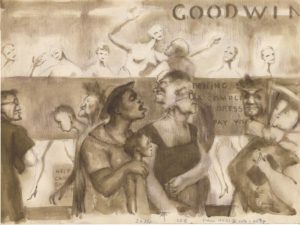
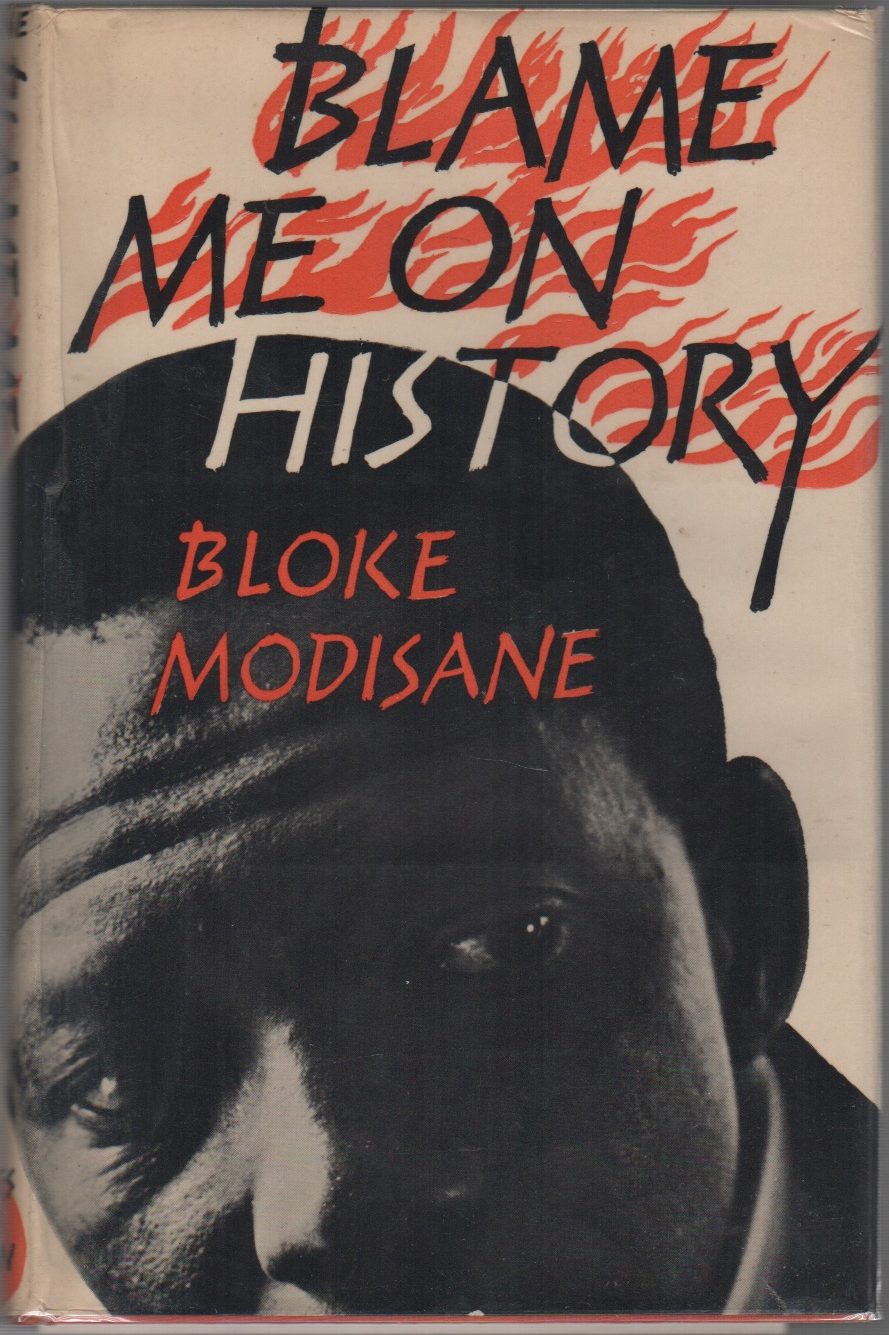
![9. [Fifth Ave. Vietnam Peace Parade Committee]. [Two Buttons from the 1967 March on the Pentagon]. Image](http://store.briancassidy.net/cassidy/images/items/17645.jpg)

![11. [Black Panther Party]. THE BLACK PANTHER INTERCOMMUNAL NEWS SERVICE [258 issues]. Image](http://catalogue15.briancassidy.net/wp-content/uploads/2019/06/23709-201x300.jpeg)
![12. KENYATTA, Charles. SODOM AND GOMORRAH [Cover Title]. Image](http://catalogue15.briancassidy.net/wp-content/uploads/2019/05/23312-231x300.jpeg)
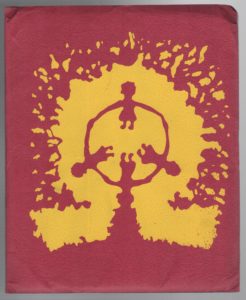
![14. [Yippies]: [Chicago Eight]. William Yippie. DON’T FLUSH FOR EVERYTHING! Image](http://catalogue15.briancassidy.net/wp-content/uploads/2019/06/23310-234x300.jpeg)
![15. [Yippies]. WASH. D.C. JULY 4, 1971 SMOKE-IN: Let](http://store.briancassidy.net/cassidy/images/items/19257.jpeg)
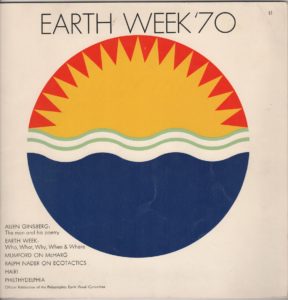
![17. HARTWELL, M.L. and S. Palmer (artist). #1 EARTH DAY SERIES [Earth Day Poster]. Image](http://catalogue15.briancassidy.net/wp-content/uploads/2019/06/23601-224x300.jpg)

![19. [Earth First!]. EARTH FIRST! The 1984 Road Show [Poster]. Image](http://catalogue15.briancassidy.net/wp-content/uploads/2019/06/23577-1-184x300.jpeg)
![20. [DAM Collective]. EARTH FIRST! DIRECT ACTION MANUAL [Signed]. Image](http://catalogue15.briancassidy.net/wp-content/uploads/2019/06/23559-e1560799910704.jpeg)
![21. [LGBTQ+]: [ACT UP] . [ACT UP SAN FRANCISCO / ACT UP GOLDEN GATE PUBLICATIONS AND EPHEMERA 1989 - 1995]. Image](http://catalogue15.briancassidy.net/wp-content/uploads/2019/06/22716-300x295.jpeg)
![22. THOMPSON, Steve (photographer). [Seven Signed Photographs from the 1993 Gay Rights March on Washington]. Image](http://catalogue15.briancassidy.net/wp-content/uploads/2019/06/23320-211x300.jpeg)
![23. [Consumption]: [Trash]: [Recycling]. VOSS, Jan (Artist). DO! KUM, ENTE! Image](http://catalogue15.briancassidy.net/wp-content/uploads/2019/06/22077-292x300.jpeg)
![24. [Tattooing]. LACASSAGNE, Jean. TATOUAGES DU MILIEU. Image](http://catalogue15.briancassidy.net/wp-content/uploads/2019/05/23246-190x300.jpeg)
![25. [Graffiti]. FOUCART, Jacque. LES GRAFFITI DE LA RUE D](http://catalogue15.briancassidy.net/wp-content/uploads/2019/06/22807-300x300.jpg)
![26. [Anonymous] and Harrison Cady (illustrator). THE GIRL WITH THE ROSEWOOD CRUTCHES. Image](http://catalogue15.briancassidy.net/wp-content/uploads/2019/06/23551-225x300.jpg)
![27. [Sideshow Performers]: [Randion]. BIOGRAPHY OF PRINCE RANDION: World](http://catalogue15.briancassidy.net/wp-content/uploads/2019/06/23048-228x300.jpeg)
![28. M.E. Toepel (Artist). [Nine Original Illustrated 1907 New York Motorcycle Club Postcards]. Image](http://catalogue15.briancassidy.net/wp-content/uploads/2019/05/23322d-300x176.jpeg)
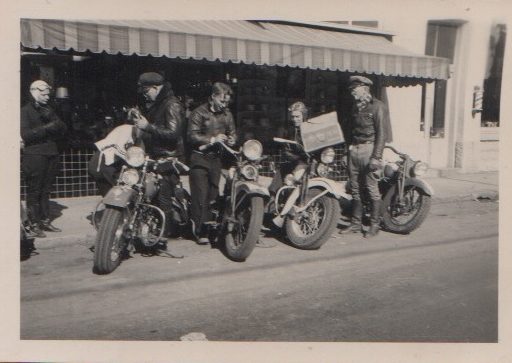
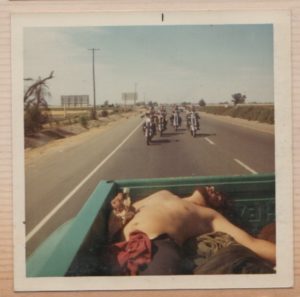
![31. [African-Americana]. [](http://catalogue15.briancassidy.net/wp-content/uploads/2019/06/23284-300x232.jpeg)
![32. PRITCHER, J.L. [JACOB LEON PRITCHER, M.D.]. A SEX STARVED WORLD. Image](http://catalogue15.briancassidy.net/wp-content/uploads/2019/05/23250-300x300.jpg)
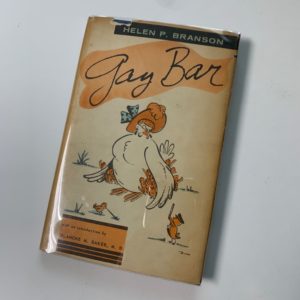
![34. TAILS OF SCORPIO Vol. 1, No. 5 [September 1979]. Image](http://catalogue15.briancassidy.net/wp-content/uploads/2019/06/23309-233x300.jpeg)
![35. GOODWIN, Jason (Pseud.) [Samizdat]. DESIAT](http://catalogue15.briancassidy.net/wp-content/uploads/2019/06/23339c-248x300.jpeg)
![36. [Board Games]. BEAT THE BORDER: The Game of Narcotics Traffic. Image](http://catalogue15.briancassidy.net/wp-content/uploads/2019/06/23271-300x225.jpg)
![37. [Trade Catalogs]: [Cocaine]. BROTHER BOB PRODUCTIONS - 1978 CATALOGUE / 1978 ADDENDUM. Image](http://catalogue15.briancassidy.net/wp-content/uploads/2019/05/23315-223x300.jpeg)
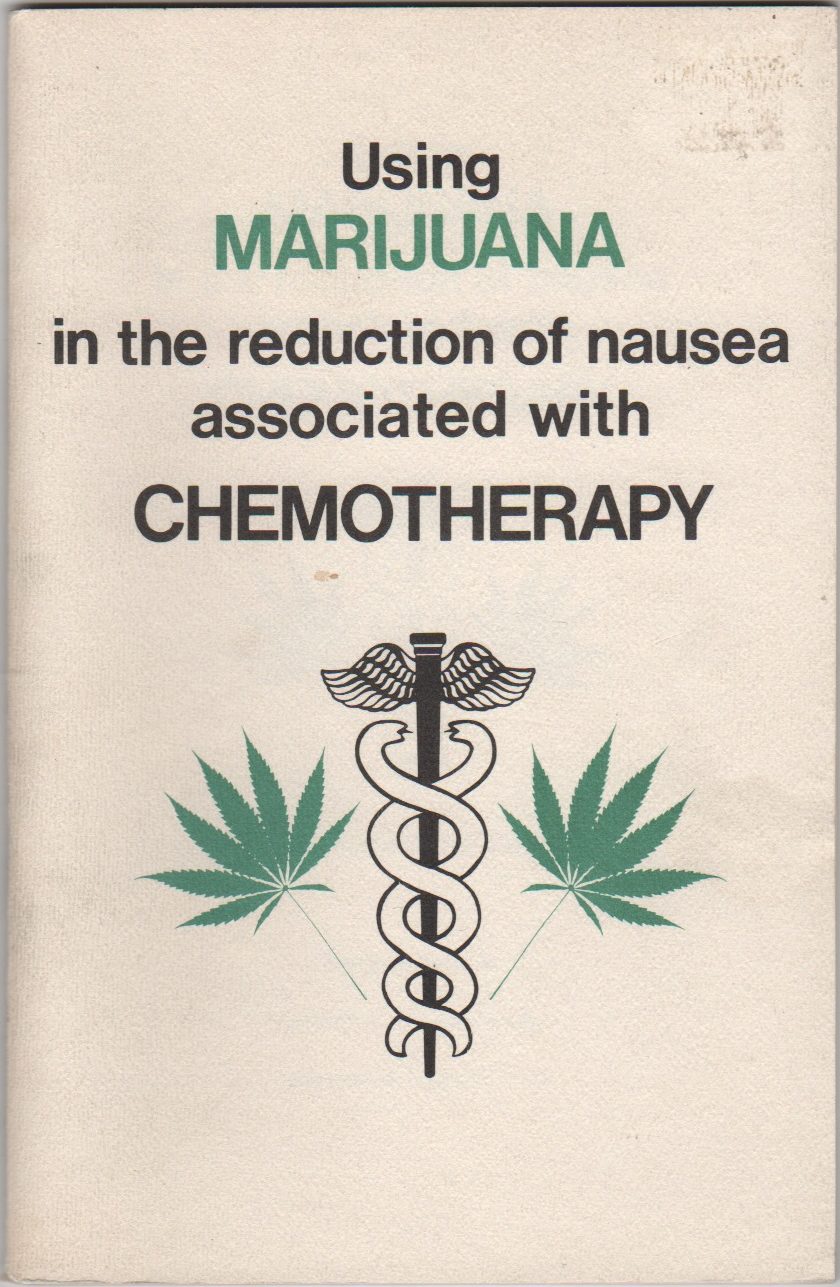
![39. [Photography]: [Mug Shots]. [Collection of Police Photographs of Con Men and other Fraudsters]. Image](http://catalogue15.briancassidy.net/wp-content/uploads/2019/06/23557b-300x248.jpeg)

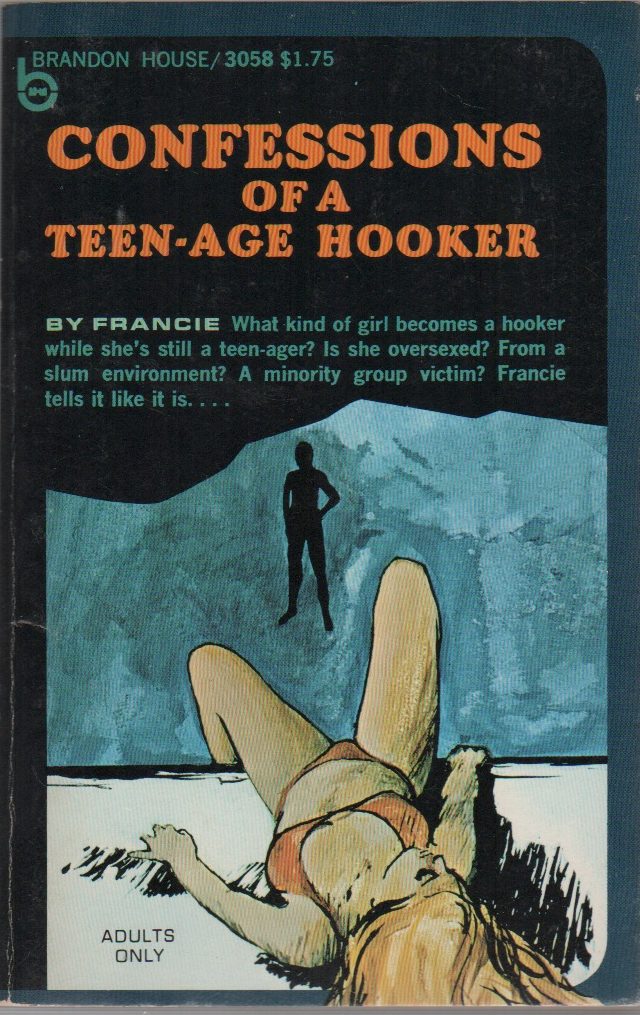
![42. DONALDSON, J.P. [Pseud. Donald J. Pfeil]. CASE HISTORIES OF...VIRILE OLDER MEN AND WILLING YOUNG GIRLS. Image](http://catalogue15.briancassidy.net/wp-content/uploads/2019/06/22797-e1560686496442.jpeg)
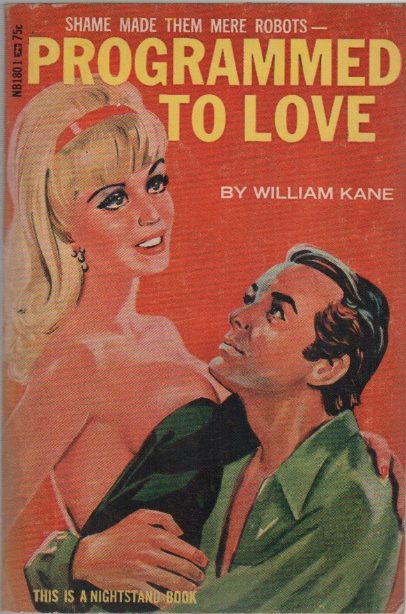
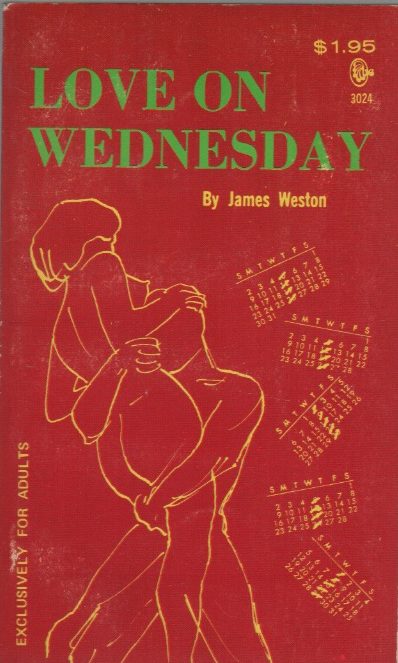
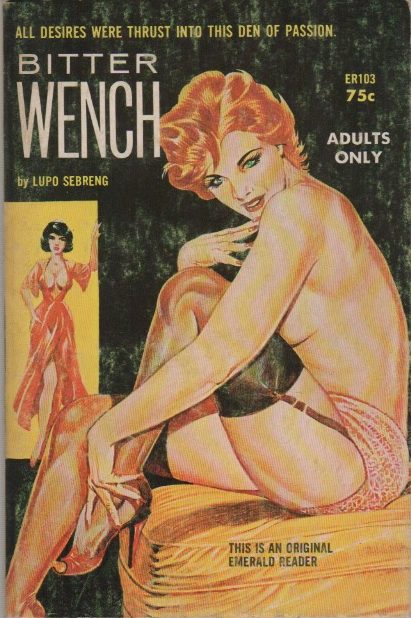
![46. HOLLIDAY, Don [pseud. Victor J. Banis]. THE WATERCRESS FILE. Image](http://catalogue15.briancassidy.net/wp-content/uploads/2019/06/23300-e1560687457437.jpeg)
![47. HOLLIDAY, Don [pseud. Victor J. Banis]. THE SON GOES DOWN. Image](http://catalogue15.briancassidy.net/wp-content/uploads/2019/06/23240-e1560687640525.jpeg)
![48. HOLLIDAY, Don [pseud. Victor J. Banis]. GOTHIC GAYE. Image](http://catalogue15.briancassidy.net/wp-content/uploads/2019/06/22932-e1560687878625.jpeg)
![49. HOLLIDAY, Don [pseud. Victor J. Banis]. THE GAY DOGS. Image](http://catalogue15.briancassidy.net/wp-content/uploads/2019/06/23239-e1560687996256.jpeg)
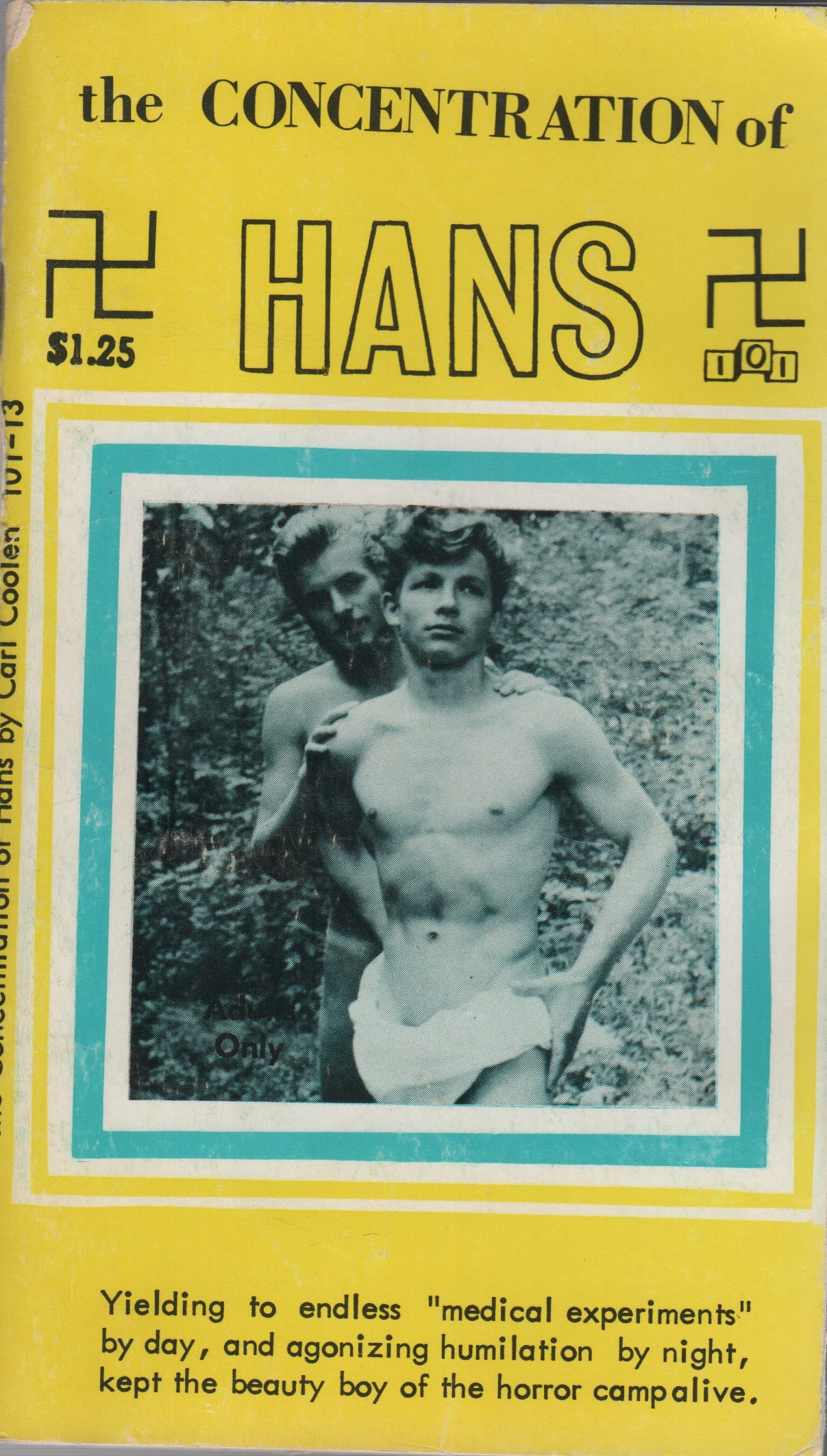
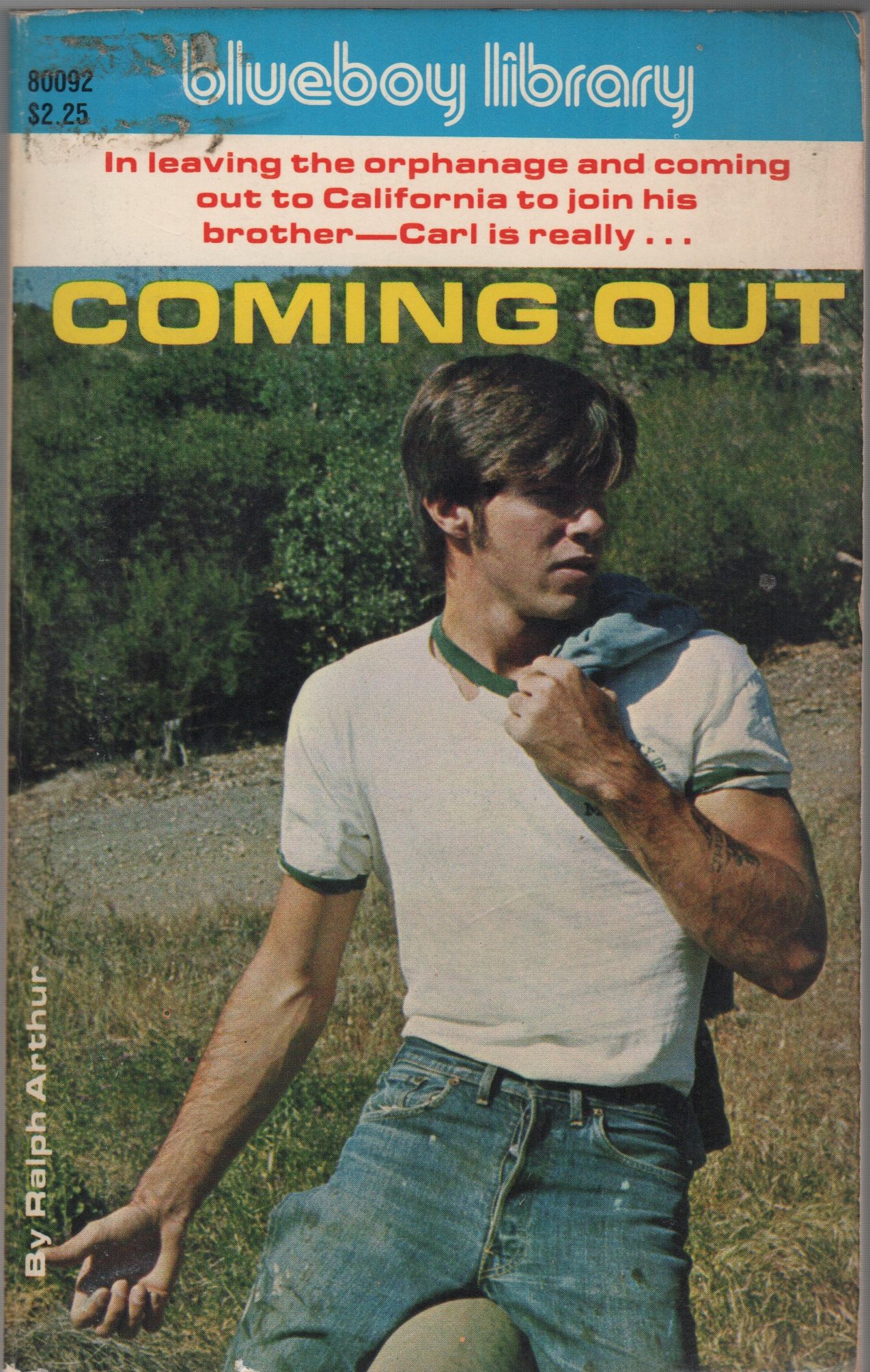
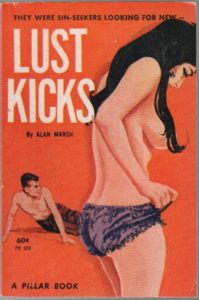
![53. [Beat Influence]. DUNNE, J. W. AN EXPERIMENT WITH TIME. Image](http://catalogue15.briancassidy.net/wp-content/uploads/2019/05/22573-300x300.jpg)
![54. [CORSO, Gregory]. WHITE, T.H. THE SWORD IN THE STONE. Image](http://catalogue15.briancassidy.net/wp-content/uploads/2019/05/23346-207x300.jpeg)

![56. GINSBERG, Allen. HOWL: And Other Poems [Inscribed]. Image](http://catalogue15.briancassidy.net/wp-content/uploads/2019/06/23308-e1560699222374.jpeg)
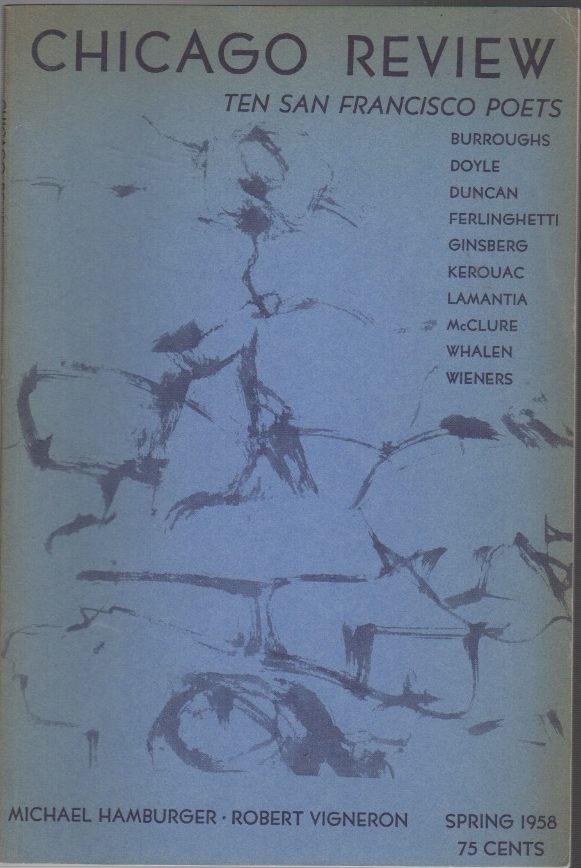
![58. GINSBERG, Allen. KADDISH AND OTHER POEMS 1958-1960 [Inscribed]. Image](http://catalogue15.briancassidy.net/wp-content/uploads/2019/06/23303-e1560699076616.jpeg)
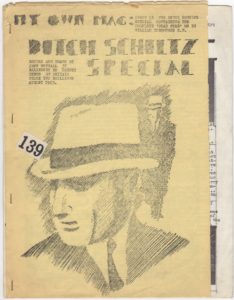
![60. BRANAMAN, Robert. COME INTO OUR GAME ROOM! [Poster]. Image](http://catalogue15.briancassidy.net/wp-content/uploads/2019/06/23631-229x300.jpg)
![61. KEROUAC, Jack. UNCOLLECTED WRITINGS [Unauthorized Piracy]. Image](http://catalogue15.briancassidy.net/wp-content/uploads/2019/05/23636-300x300.jpg)
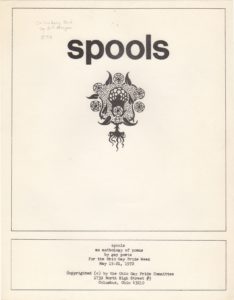
![63. GINSBERG, Allen. [Photograph of Theater Director Robert Wilson by Allen Ginsberg]. Image](http://catalogue15.briancassidy.net/wp-content/uploads/2019/06/23408-1-e1560698939501.jpeg)
![64. RUTKOWSKI, Richard (photographer) [Allen Ginsberg]. [Photograph of Allen Ginsberg and Gus Van Sant]. Image](http://catalogue15.briancassidy.net/wp-content/uploads/2019/06/23409-1-e1560698861145.jpeg)
![65. [William Burroughs]. CECIL, Paul (Editor). A WILLIAM BURROUGHS BIRTHDAY BOOK. Image](http://catalogue15.briancassidy.net/wp-content/uploads/2019/06/23542-e1560698801887.jpeg)
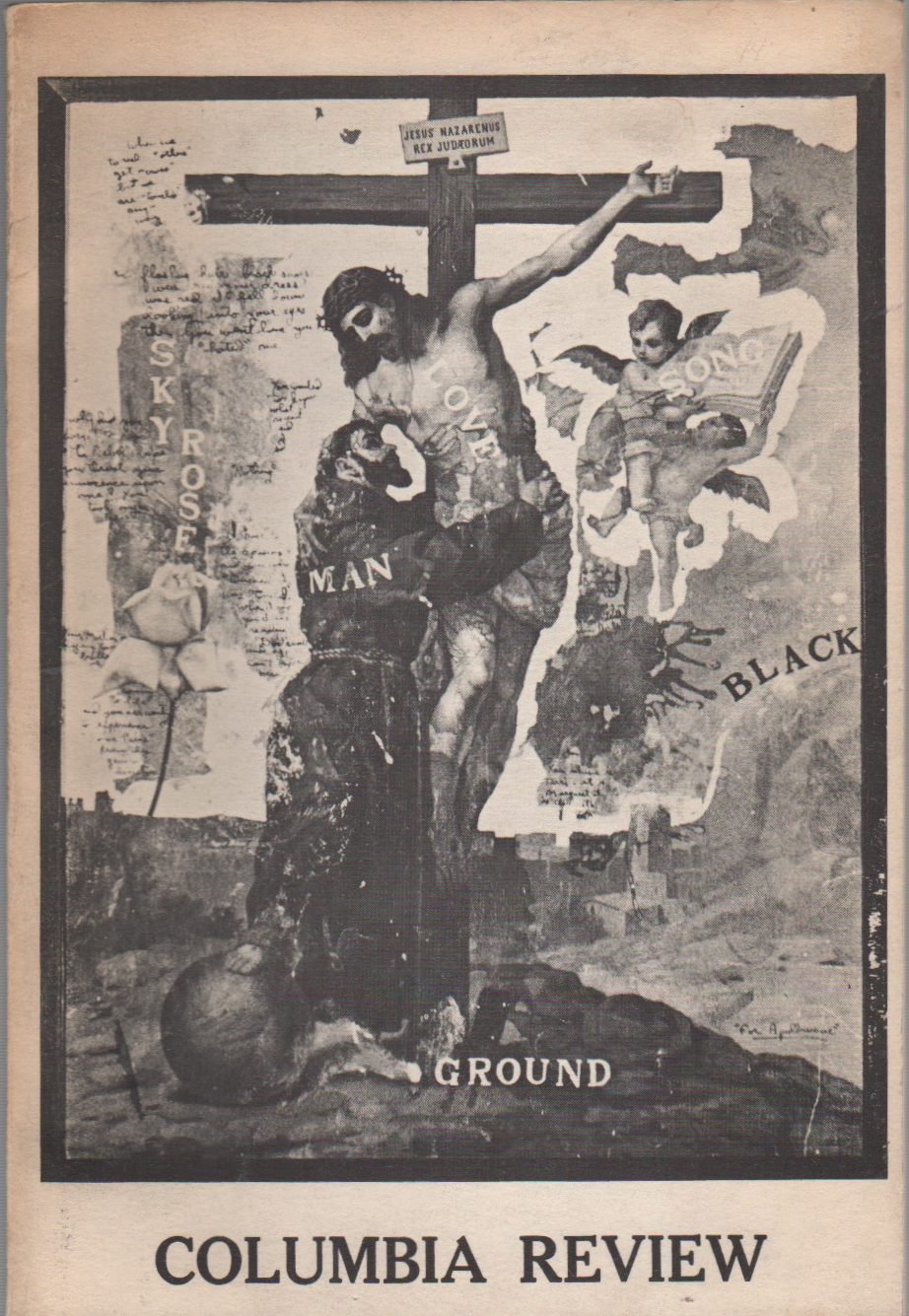
![67. [Fuck You Press]. [ED SANDERS](http://catalogue15.briancassidy.net/wp-content/uploads/2019/06/22815-235x300.jpg)
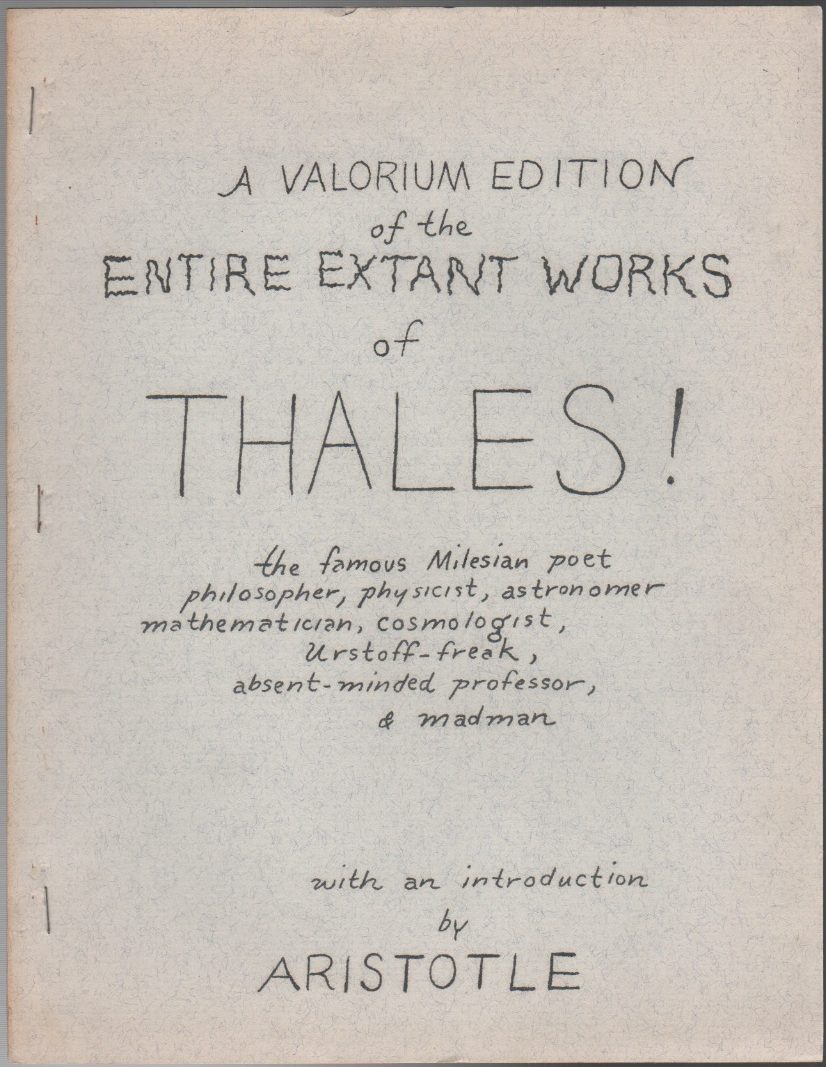
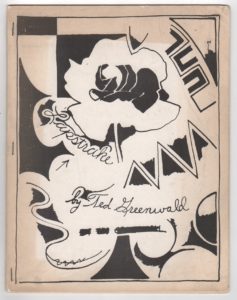
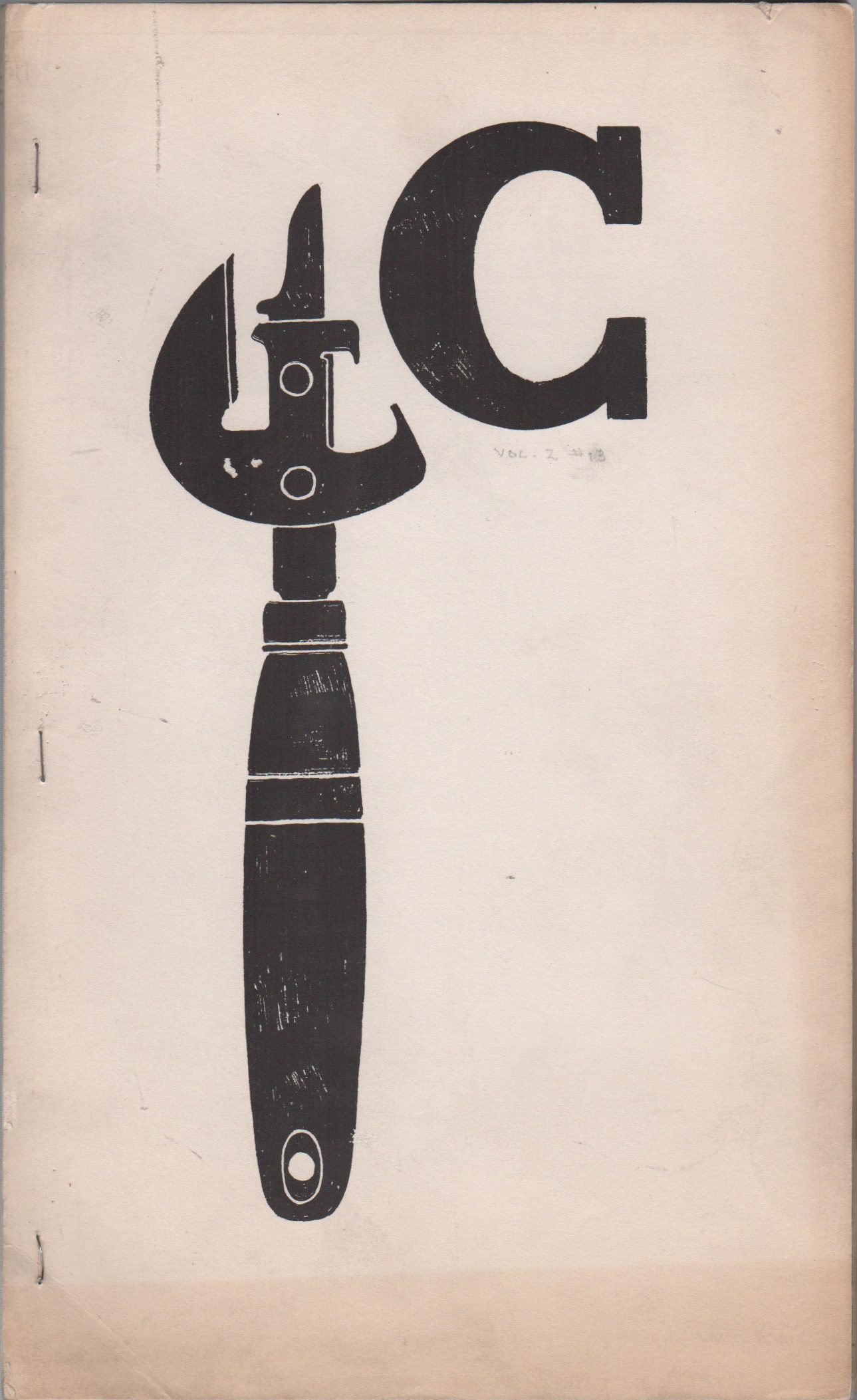
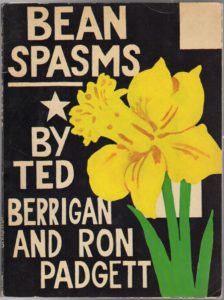
![72. SAROYAN, Aram. ARAM SAROYAN [With Original Typescript]. Image](http://catalogue15.briancassidy.net/wp-content/uploads/2019/06/23407-1-224x300.jpeg)
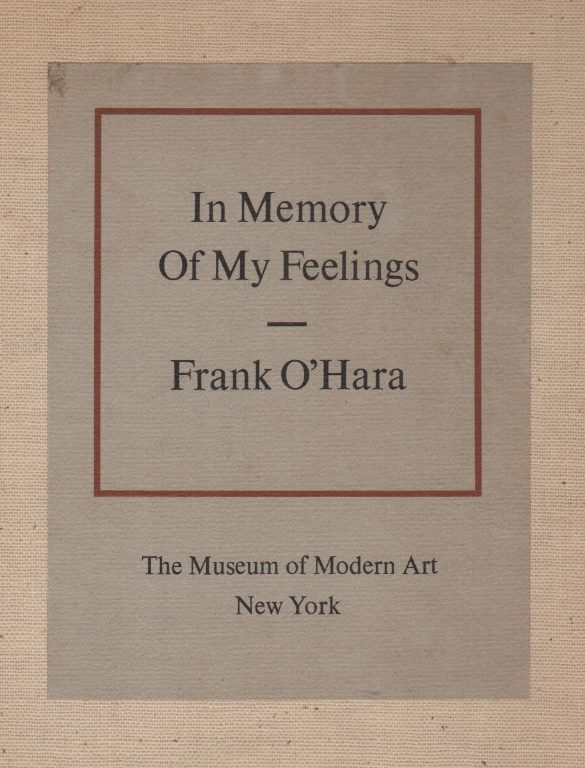
![74. GREENWALD, Ted (Editor) et al. THE POETRY PROJECT NEWSLETTER [50 Issues]. Image](http://catalogue15.briancassidy.net/wp-content/uploads/2019/06/23630-225x300.jpg)
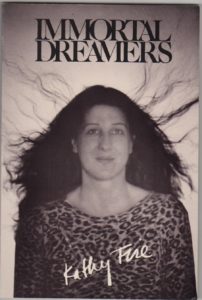
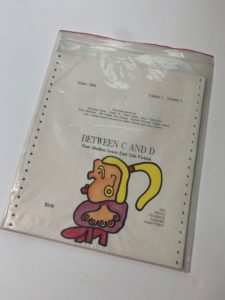
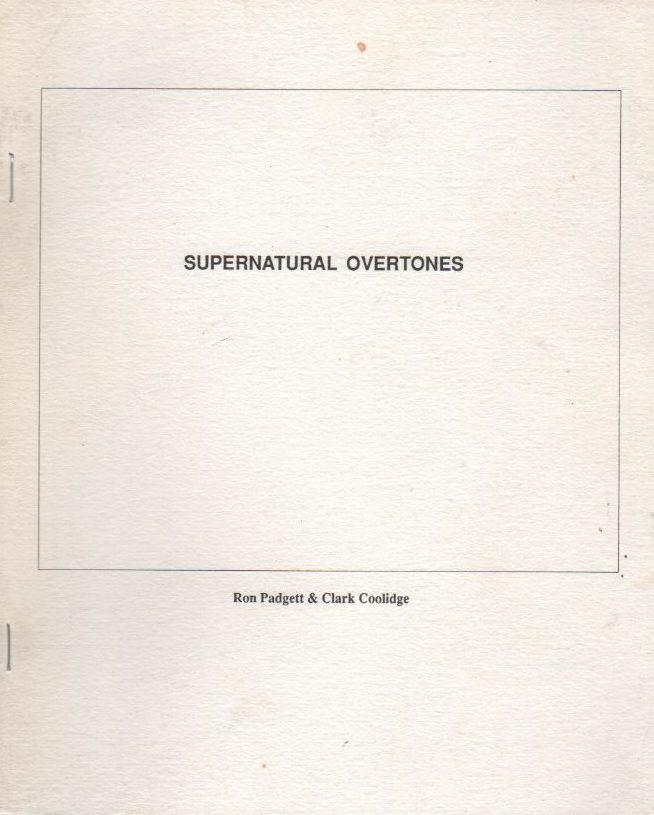
![78. WINKFIELD, Trevor (Artist) and Kenward Elmslie (Text). SNIPPETS. [Association Copy]. Image](https://store.briancassidy.net/cassidy/images/items/16197.jpeg)
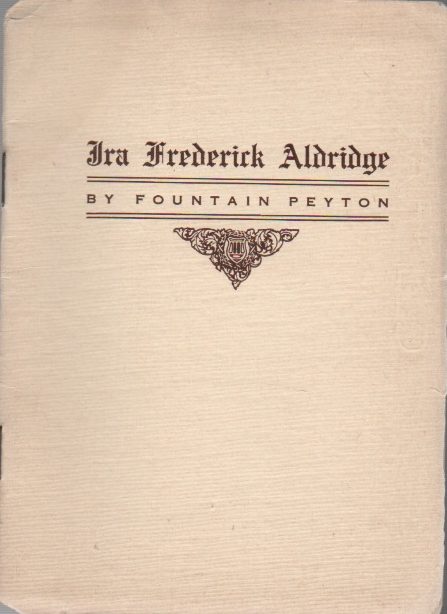
![80. [Film]. KUROSAWA, Akira. SOMETHING LIKE AN AUTOBIOGRAPHY [Signed]. Image](http://catalogue15.briancassidy.net/wp-content/uploads/2019/05/23276-202x300.jpeg)
![81. HAVEL, Vaclav. ZAHRADNI SLAVNOST [The Garden Party]. Image](http://catalogue15.briancassidy.net/wp-content/uploads/2019/05/23234-300x300.jpg)
![82. COMO, William (Editor). AFTER DARK: The National Magazine of Entertainment [Complete run of 159 issues]. Image](http://catalogue15.briancassidy.net/wp-content/uploads/2019/06/23333d-242x300.jpeg)
![83. BRAKHAGE; [Stan and Jane]. METAPHORS ON VISION [Film Culture Issue Number 30, Fall 1963]. Image](http://catalogue15.briancassidy.net/wp-content/uploads/2019/06/23176-e1560514524656-225x300.jpeg)
![84. [Angus MacLise, Jack Smith, et al]. NEW CINEMA FESTIVAL I AT FILMMAKER](http://catalogue15.briancassidy.net/wp-content/uploads/2019/06/angus3-134x300.jpg)
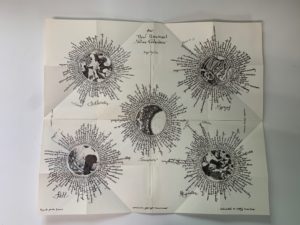
![85. MACLISE, Angus. THE NEW UNIVERSAL SOLAR CALENDAR [Inscribed]. Image](http://catalogue15.briancassidy.net/wp-content/uploads/2019/06/23716-277x300.jpeg)
![87. MACLISE, Angus. [Original Drawing in Marker]. Image](http://catalogue15.briancassidy.net/wp-content/uploads/2019/06/23717-162x300.jpeg)
![88. [BOWIE, David]: [T-Rex]. FOR THE LION AND THE UNICORN IN THE OAK FORESTS OF FAUN. Image](http://catalogue15.briancassidy.net/wp-content/uploads/2019/06/22977-e1560469833786.jpeg)
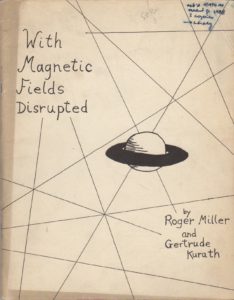
![90. SAMS, Gideon. THE PUNK [Signed]. Image](http://store.briancassidy.net/cassidy/images/items/22722.jpeg)
![91. [Punk]: [CBGB](http://catalogue15.briancassidy.net/wp-content/uploads/2019/05/23242-195x300.jpeg)
![92. MEYER, Russ and Roger Ebert, Malcolm McLaren [Sex Pistols]. WHO KILLED BAMBI? Image](http://catalogue15.briancassidy.net/wp-content/uploads/2019/06/23718-1-e1560713064614.jpeg)
![93. [Punk]: [Sex Pistols]. [Sex Pistols Press Photo Archive]. Image](http://catalogue15.briancassidy.net/wp-content/uploads/2019/06/23649c-300x246.jpeg)
![94. [Hip-Hop]. DISCO HISTORY / AUDUBON / Dec 8 Sparkle 6 D.Js Convention [Original 1978 Flyer]. Image](http://catalogue15.briancassidy.net/wp-content/uploads/2019/05/23277-233x300.jpeg)
![95. ZERO, Andy et al, Contributors. CITY FUN - No. 19 (Seventh of the Third Nineteen Eighty) [March 3rd, 1980]. Image](http://catalogue15.briancassidy.net/wp-content/uploads/2019/06/23295-216x300.jpeg)
![96. [Factory Records]. SAVAGE, Jon. FAC51 - THE HACIENDA MEMBERS NEWSLETTER [5 issues: Nos. 3, 4, IV [4.5], 5, 6]. Image](http://catalogue15.briancassidy.net/wp-content/uploads/2019/06/23325-218x300.jpeg)
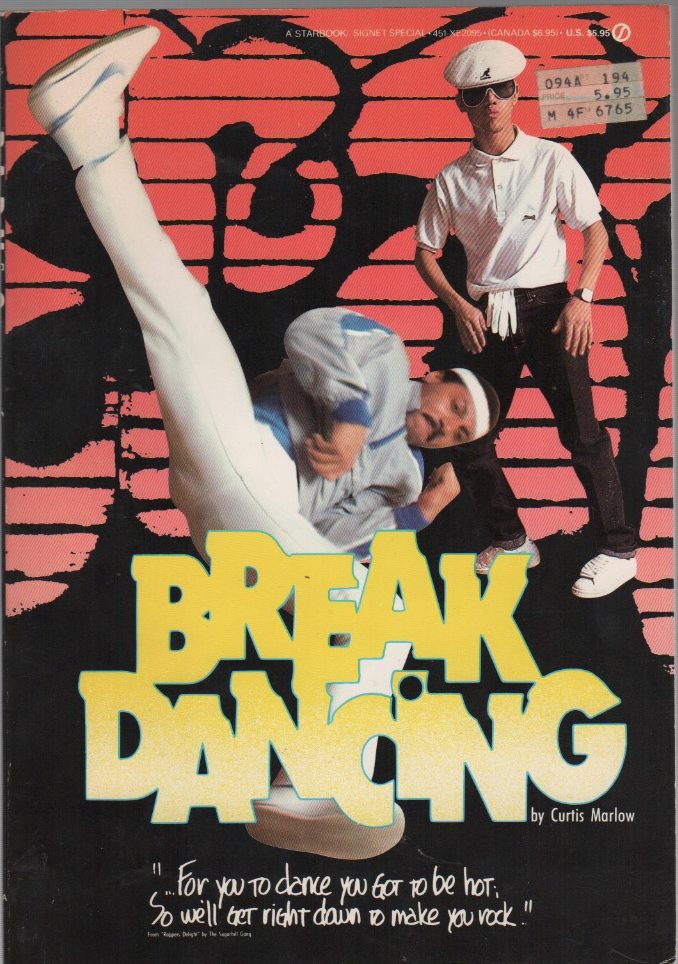
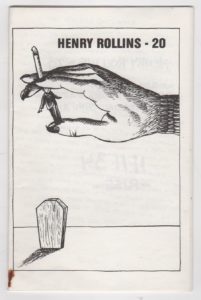
![99. [Synth-Pop]: [A-HA]. PATTERSON, Michael (Artist). [Original Pencil Sketch/Still Utilized in Video for Take on Me] Image](http://catalogue15.briancassidy.net/wp-content/uploads/2019/05/23111-1-e1558810315905.jpeg)
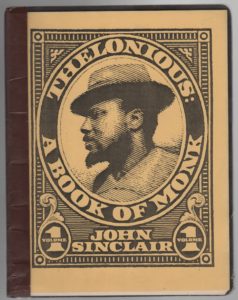
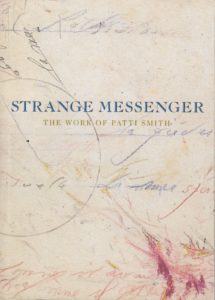

![103. [POLLOCK, Jackson]. JACKSON POLLOCK Nov. 21 to Dec. 10 [Exhibition Announcement]. Image](http://catalogue15.briancassidy.net/wp-content/uploads/2019/06/23289-300x206.jpeg)
![104. [WARHOL, Andy ]. ROLFE, Frederick (Baron Corvo). THE DESIRE AND PURSUIT OF THE WHOLE: A Romance of Modern Venice. Image](http://catalogue15.briancassidy.net/wp-content/uploads/2019/05/23317-196x300.jpeg)
![105. [Anonymous]. [Untitled Original Manuscript Illustrated Artist](http://catalogue15.briancassidy.net/wp-content/uploads/2019/05/23231-300x300.jpg)
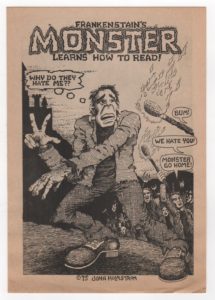
![107. WAGSTAFF, Sam. A BOOK OF PHOTOGRAPHS FROM THE COLLECTION OF SAM WAGSTAFF [Inscribed]. Image](http://catalogue15.briancassidy.net/wp-content/uploads/2019/06/23252-295x300.jpeg)
![108. KERN, Richard (Editor). [Small Collection of Richard Kern Zines] YOU SHOULD TASTE WHAT HAPPENS TO: YOU (1981), VALIUM ADDICT (Nos. 1 and 3), and DUMB FUCKER (Nos. 4 and 6). Image](http://catalogue15.briancassidy.net/wp-content/uploads/2019/06/22812-236x300.jpeg)
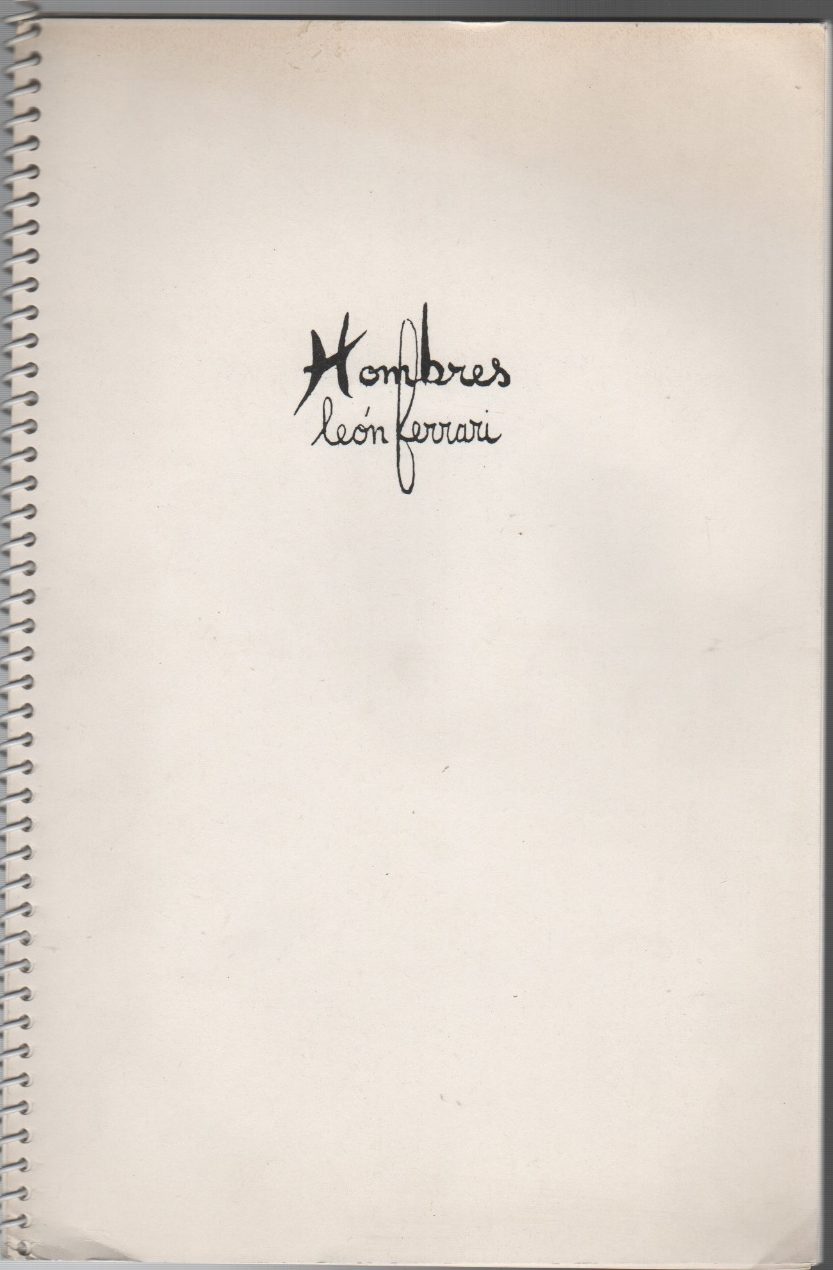
![110. BARONI, Vittore. A NEOIST RESEARCH PROJECT / A TRIP TO AKADEMGOROD: Jan / Feb 84 [Arte Postale No. 46]. Image](http://catalogue15.briancassidy.net/wp-content/uploads/2019/06/23558b-207x300.jpeg)
![111. FELDMANN, Hans-Peter. VOYEUR [1] and [2]. Image](http://store.briancassidy.net/cassidy/images/items/21985.jpeg)
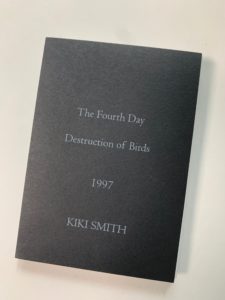
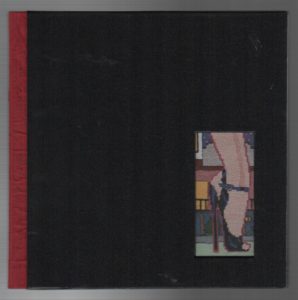
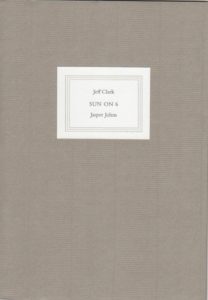
![115. [Sol LeWitt]. COBB, Chris (Photographer). [85 Photographs of Sol LeWitt Wall Drawings 343 and 146 Installation]. Image](http://catalogue15.briancassidy.net/wp-content/uploads/2019/06/23710b-300x238.jpeg)
![117. [Louis Vuitton]. [Nineteenth Century ca. 1893 Louis Vuitton Trade Card]. Image](http://catalogue15.briancassidy.net/wp-content/uploads/2019/06/vuitton-cover-300x203.jpeg)
![116. [Louis Vuitton]. [Nineteenth Century Louis Vuitton Trade Card]. Image](http://catalogue15.briancassidy.net/wp-content/uploads/2019/05/vuitton-front-300x223.jpeg)
![118. [The Great Depression]: [Domestic Life]: [Childhood]. [Whitwell, Lois B.]. [DIARY OF A CHILD / YEAR BOOK 1933]. Image](http://catalogue15.briancassidy.net/wp-content/uploads/2019/06/IMG_0332-225x300.jpg)
![119. [WWII]. [Archive of Letters to Evacuated Children in World War II]. Image](http://catalogue15.briancassidy.net/wp-content/uploads/2019/06/23392h-231x300.jpeg)
![120. [Women at Work]. [1940s Photo Album of United Airlines Stewardess Trainees]. Image](http://catalogue15.briancassidy.net/wp-content/uploads/2019/06/23646c-300x225.jpeg)
![121. WOOD, Richard K. (photographer) . [Photo Album of TVA Models]. Image](http://catalogue15.briancassidy.net/wp-content/uploads/2019/06/IMG_0346-2-300x300.jpg)
![122. [Marketing]: [Candy]: [Photography]. [MCCORMICK](http://catalogue15.briancassidy.net/wp-content/uploads/2019/06/23230c-224x300.jpeg)
![123. [Marketing]: [Food]. THE NABISCO SHOWCASE [ca. 1965]. Image](http://catalogue15.briancassidy.net/wp-content/uploads/2019/06/IMG_0338-225x300.jpg)
![124. [Soviet Union]. ПАМЯ‘Ь О СЛУЖБЕ [MEMORY OF THE SERVICE] [Soviet-Armenian Album]. Image](http://catalogue15.briancassidy.net/wp-content/uploads/2019/06/IMG_0322-300x225.jpg)
![125. [Zines]. BERNSTEIN, Anne D. [Archive of RHUBARB, the Zine of Radical Humor]. Image](http://catalogue15.briancassidy.net/wp-content/uploads/2019/06/23194-236x300.jpeg)
